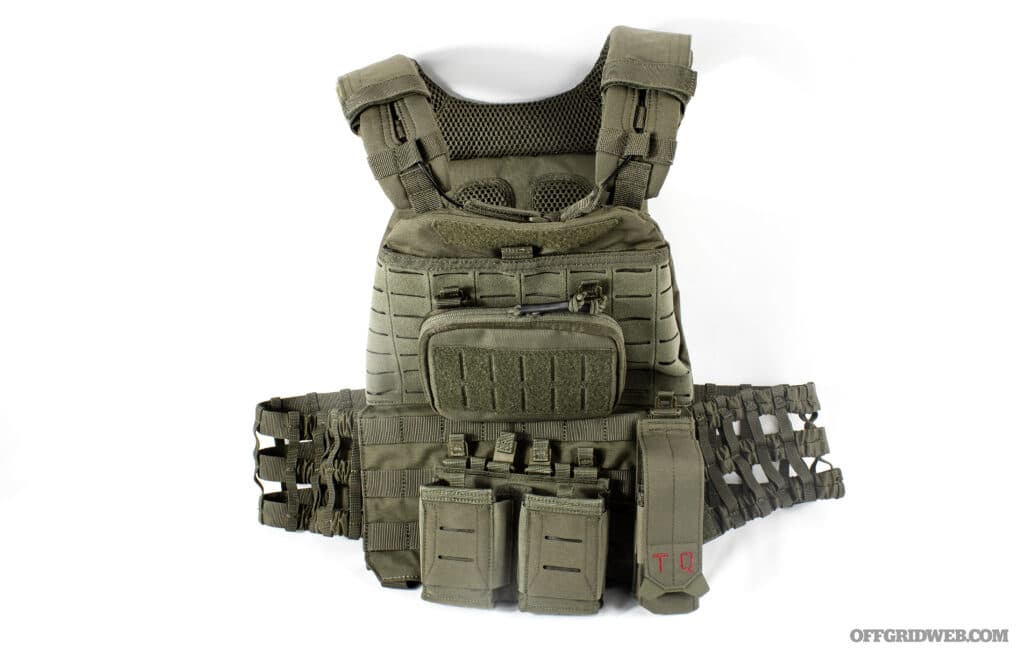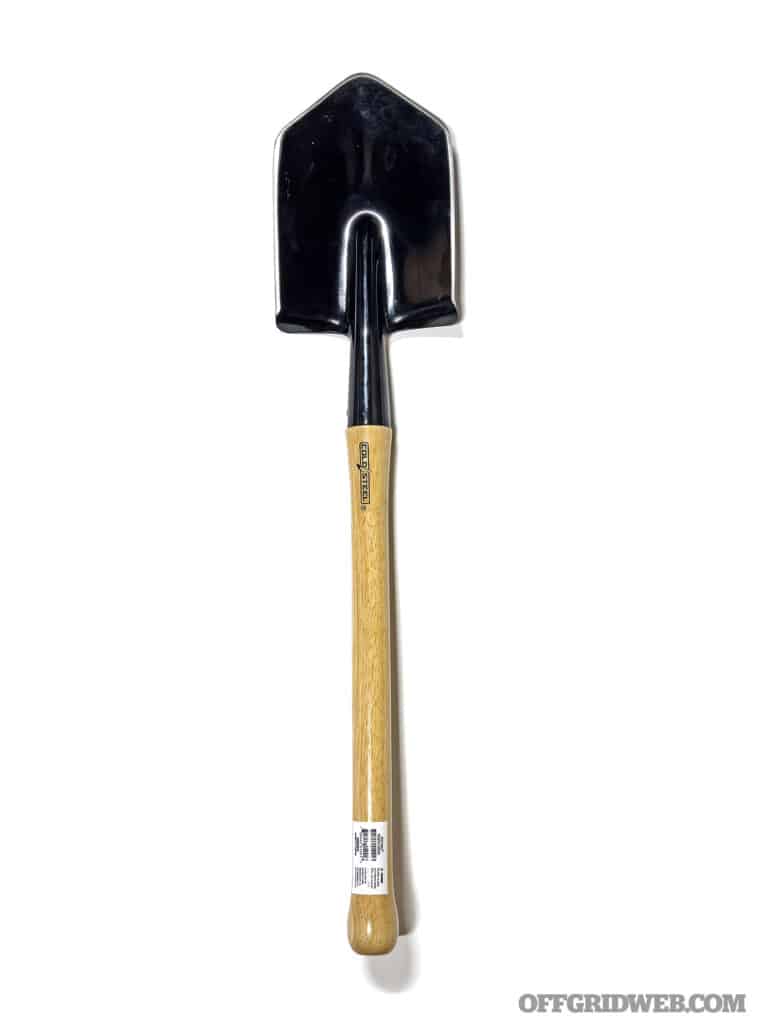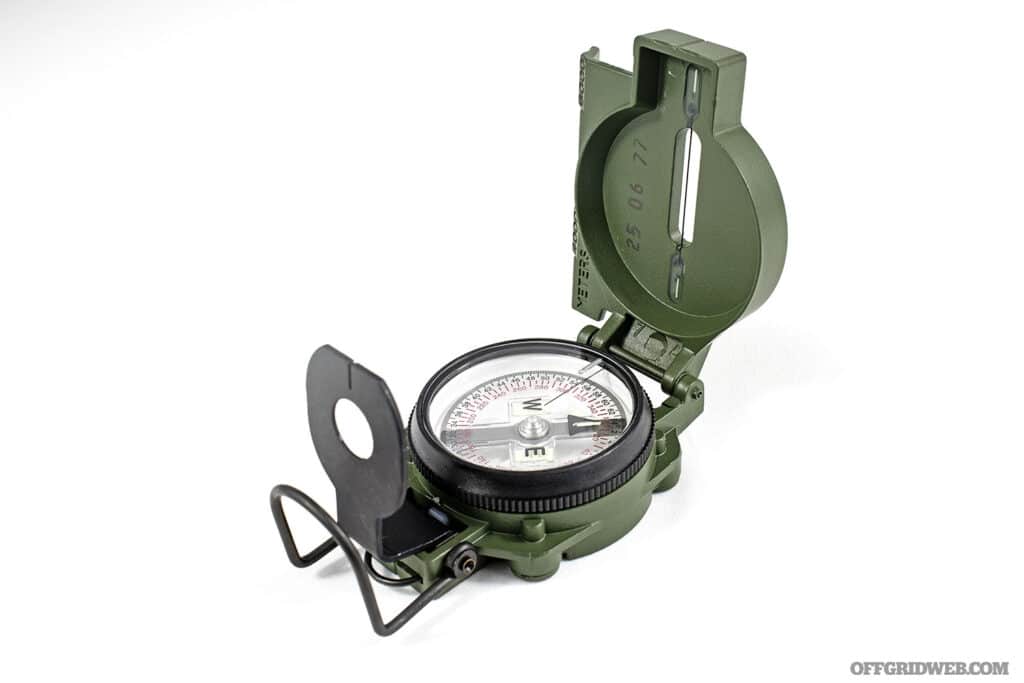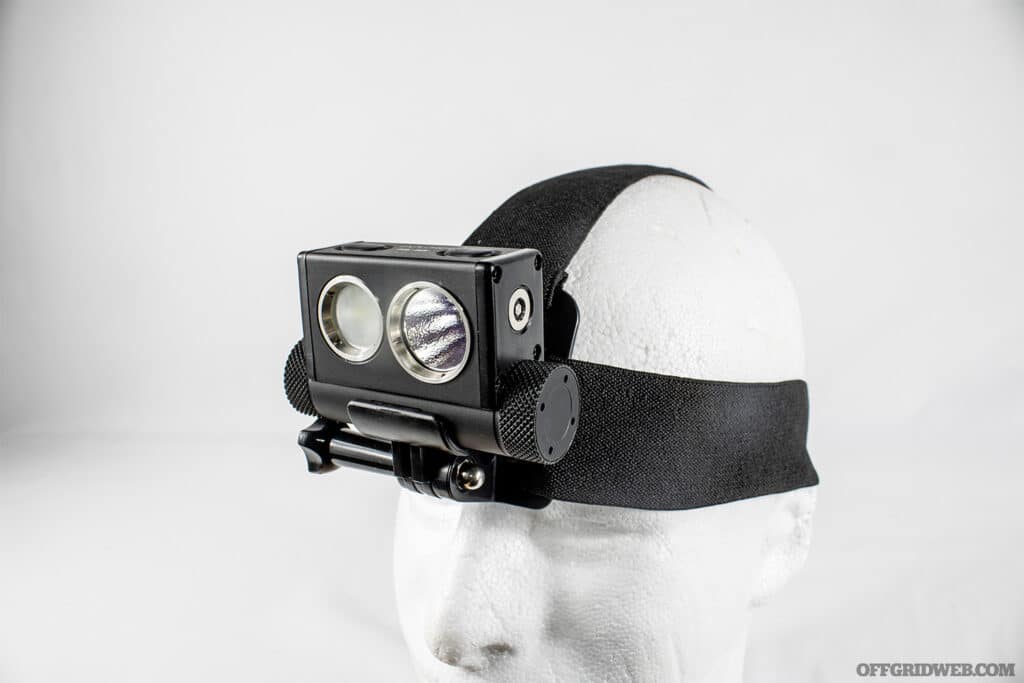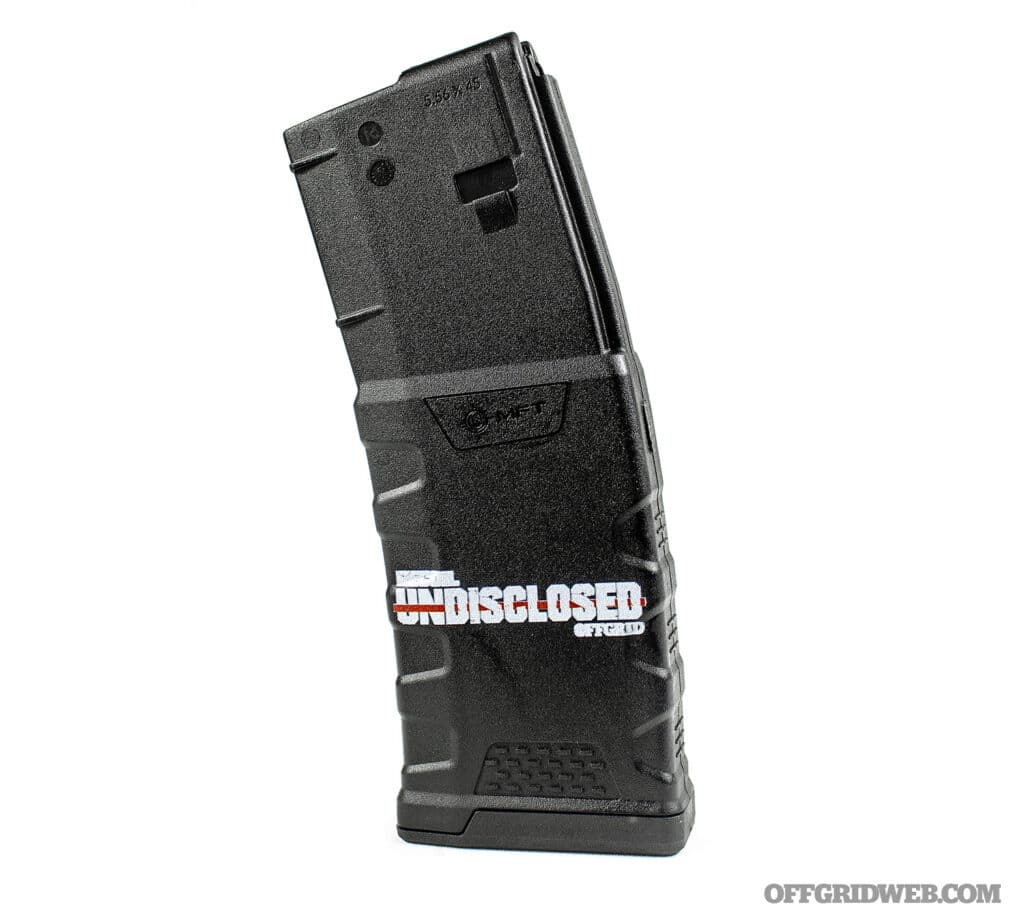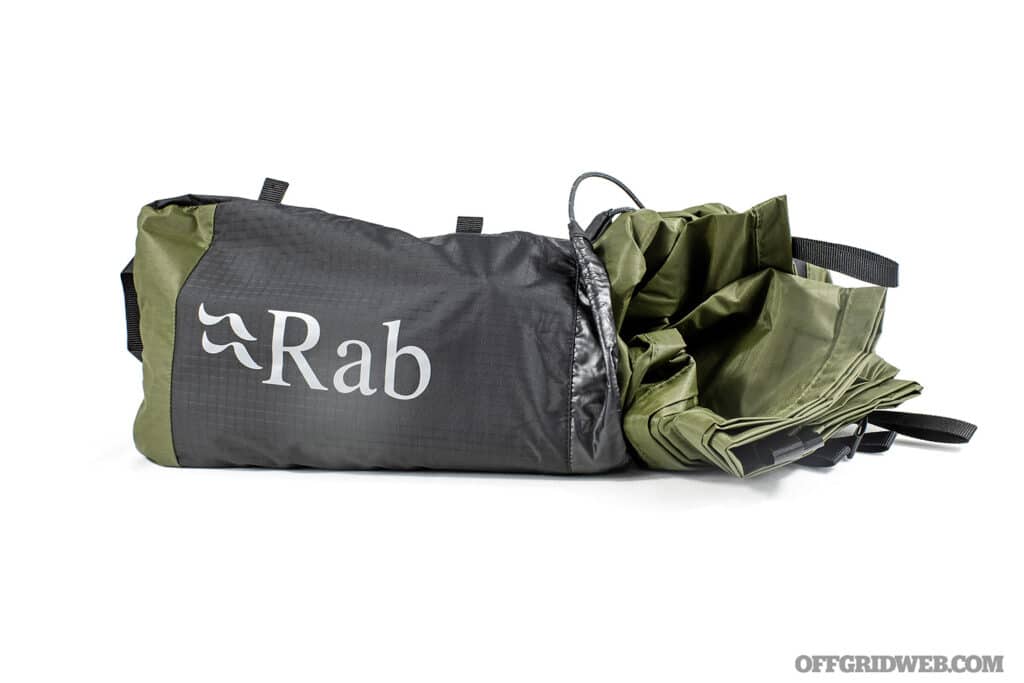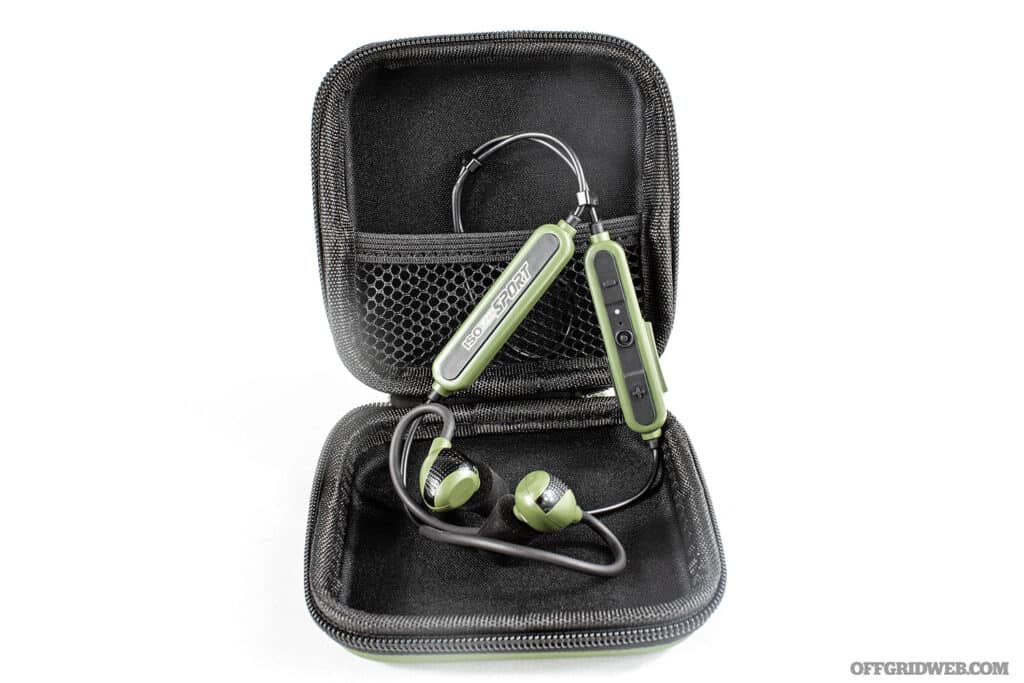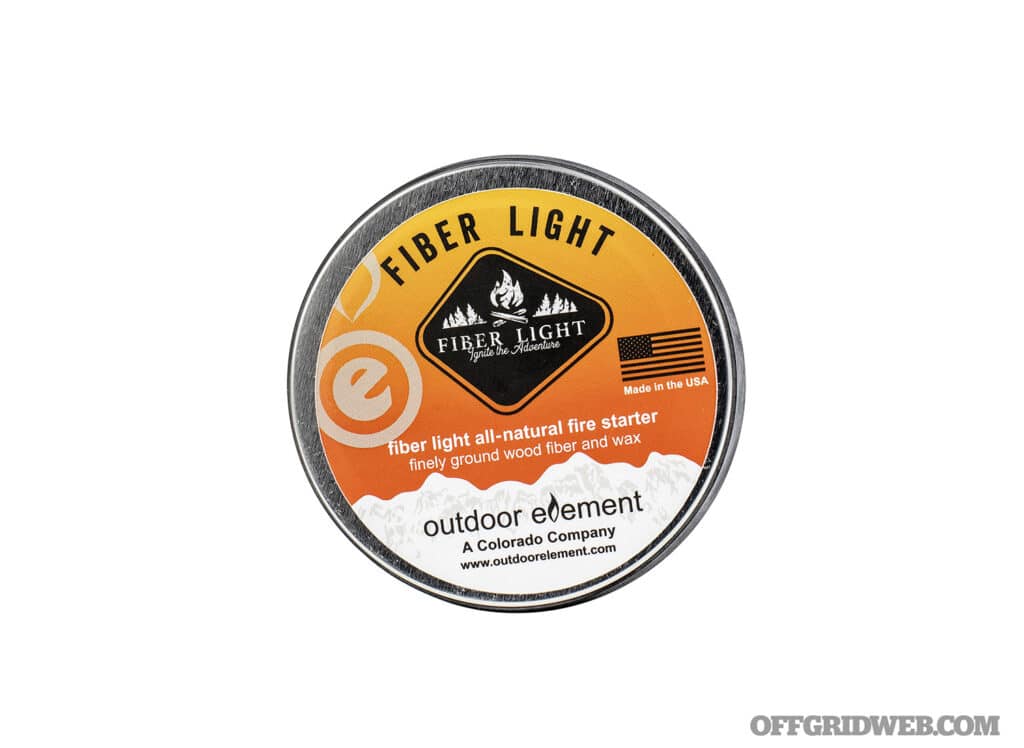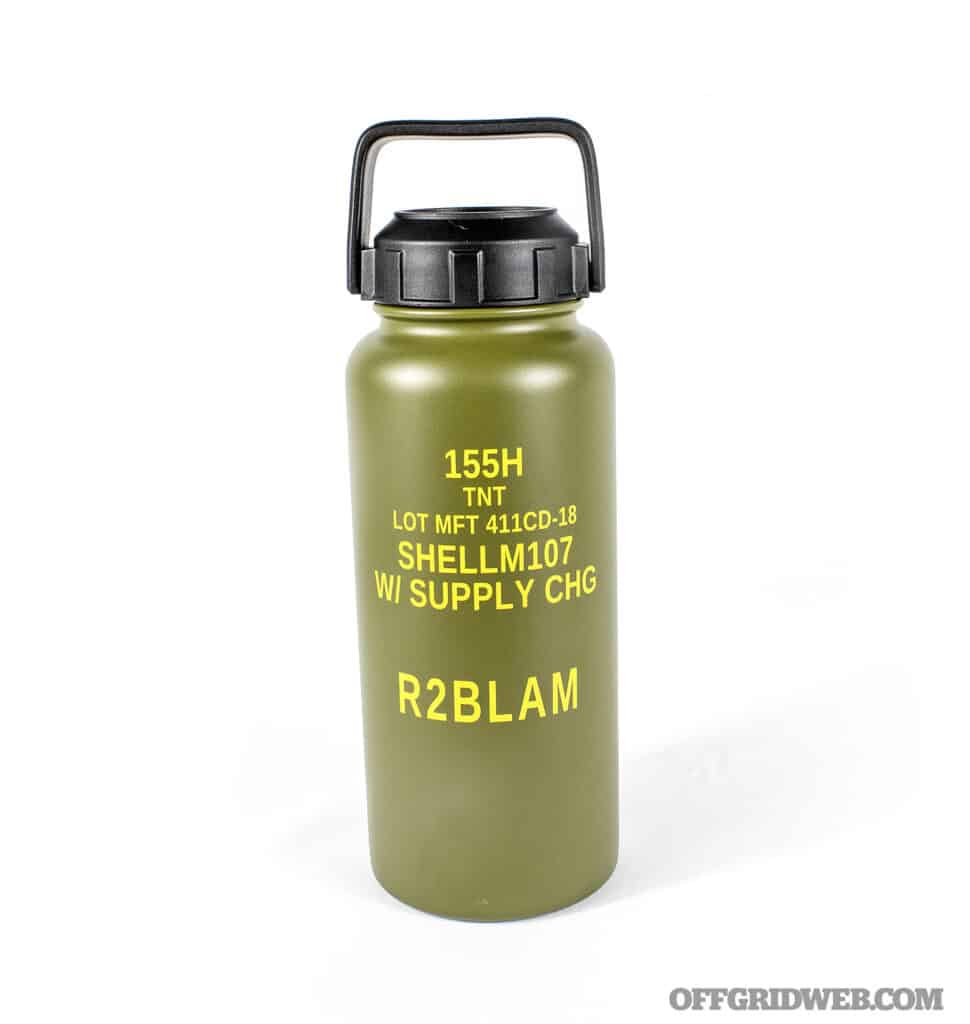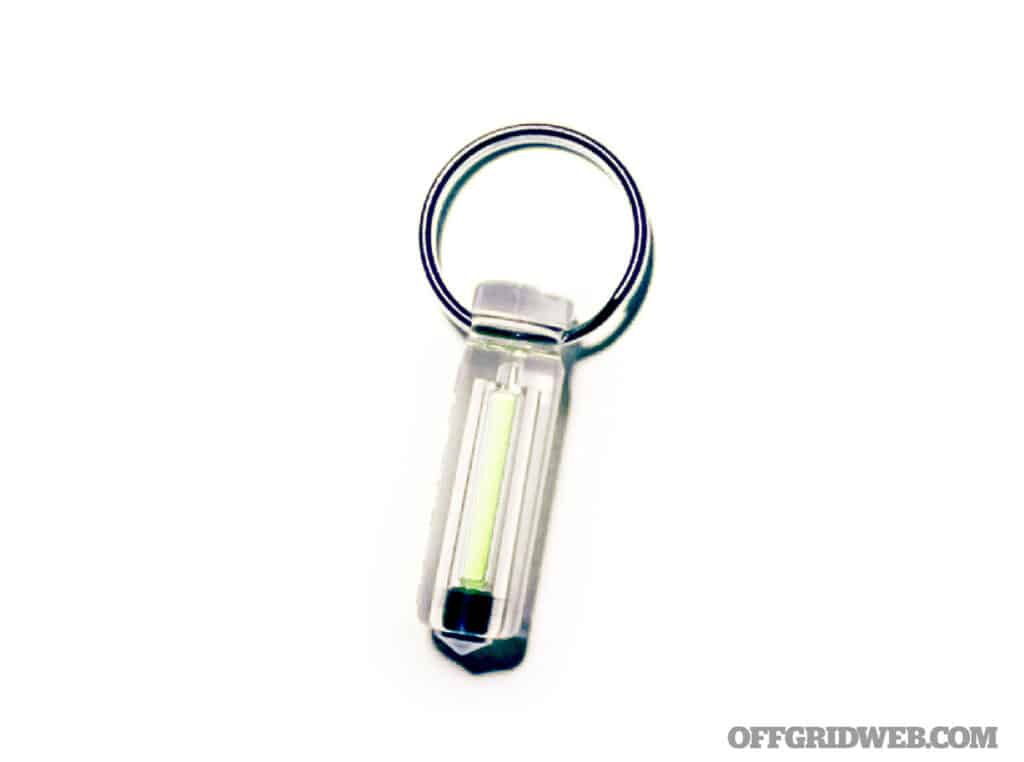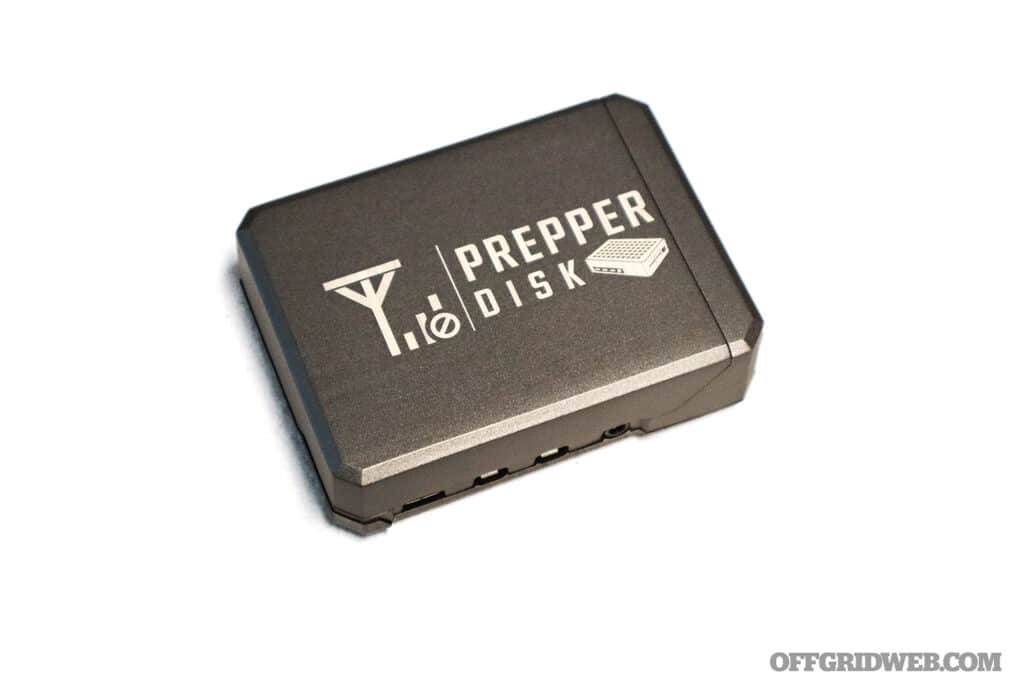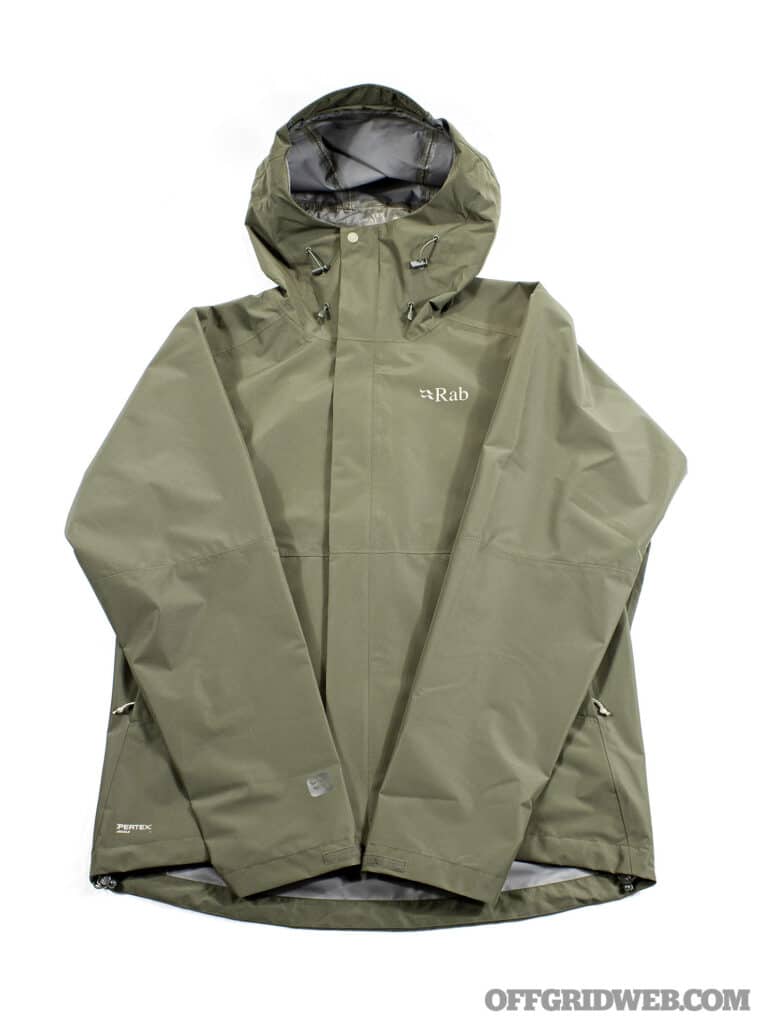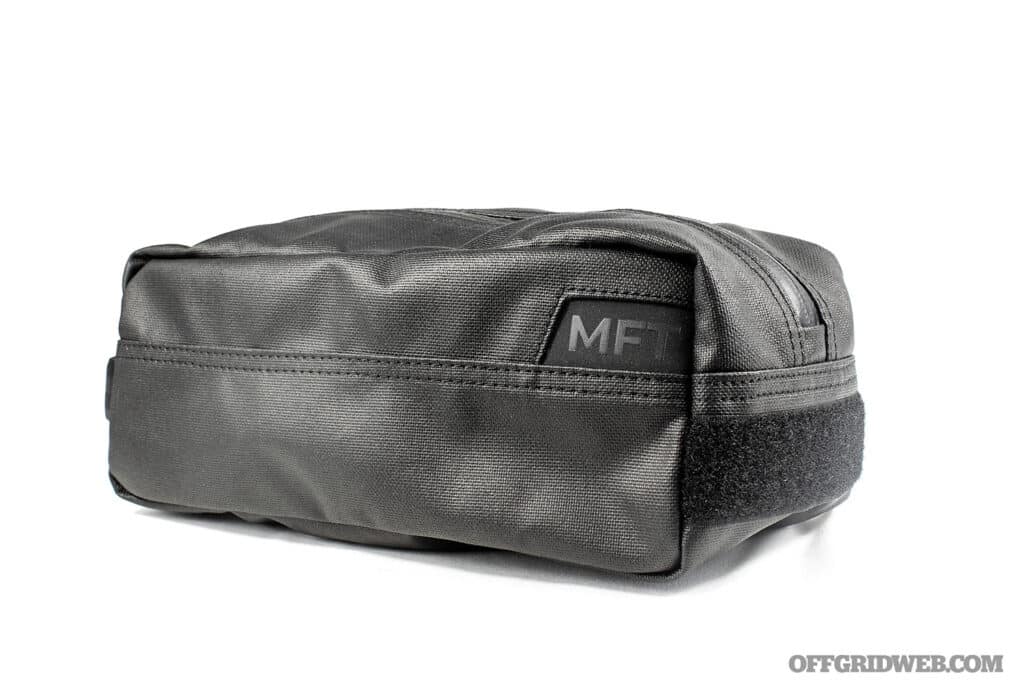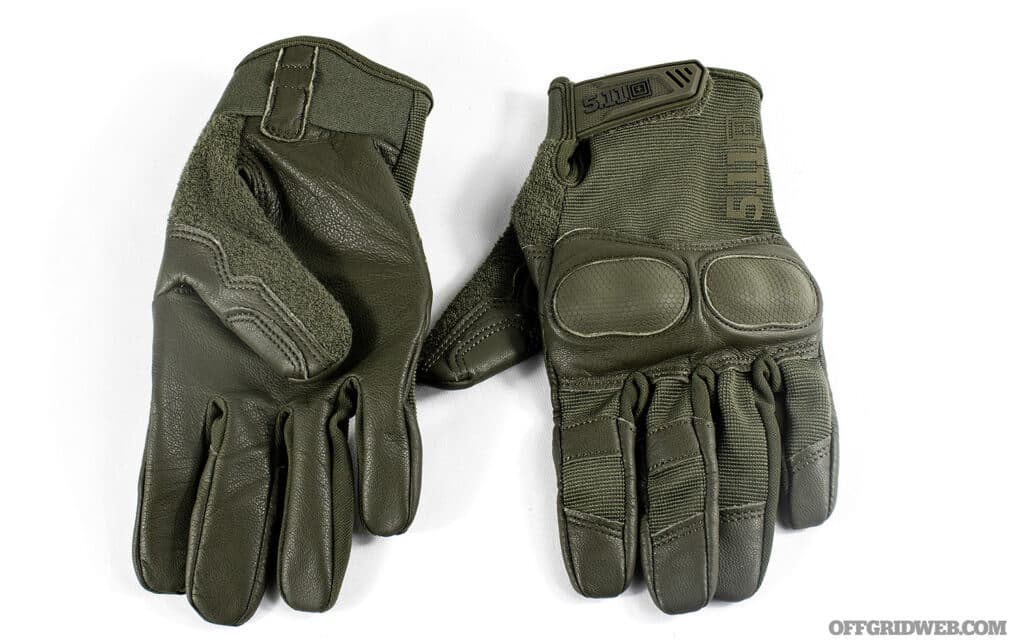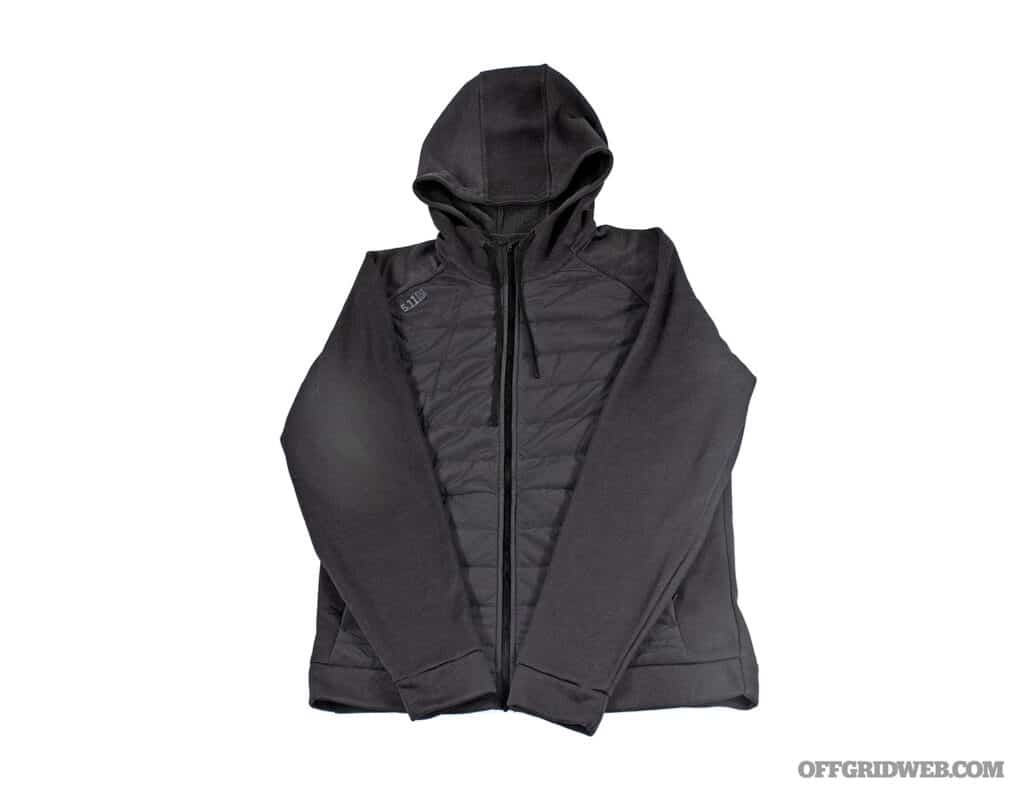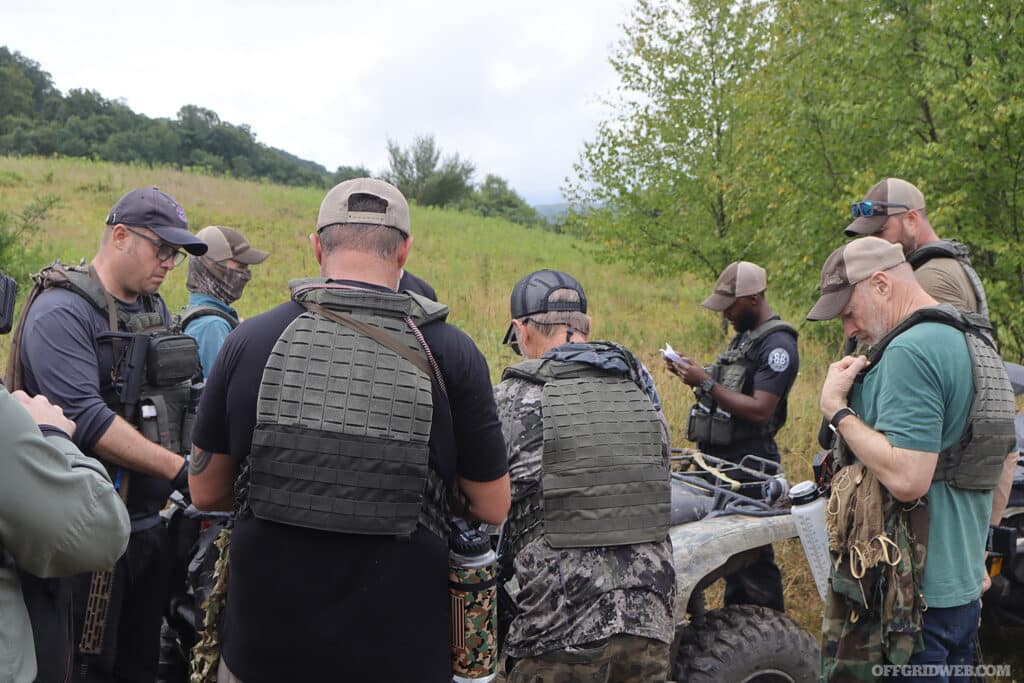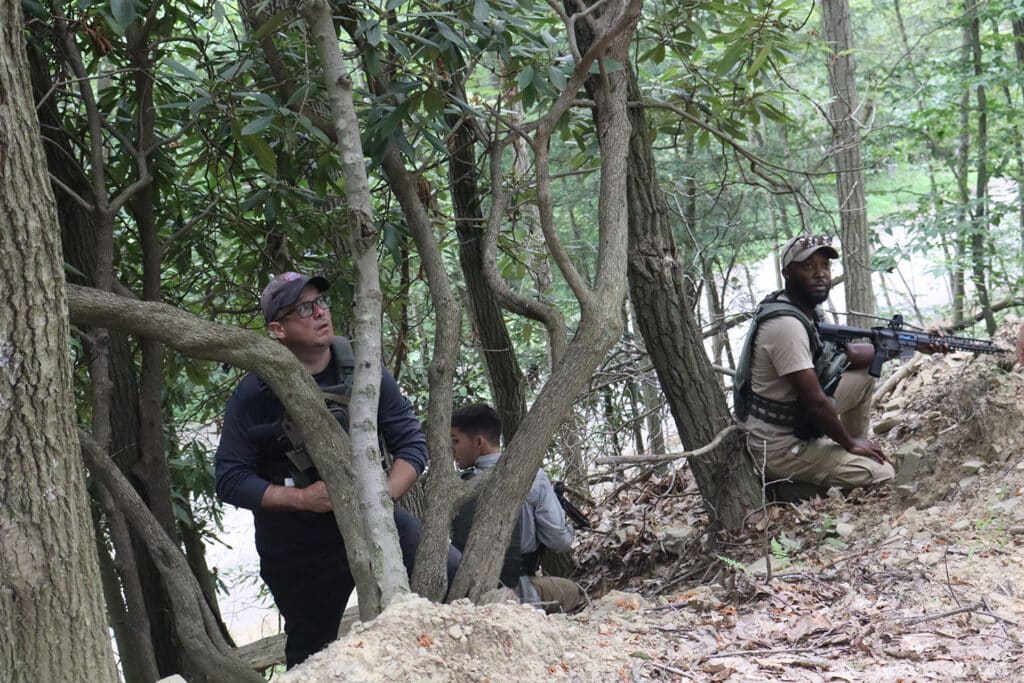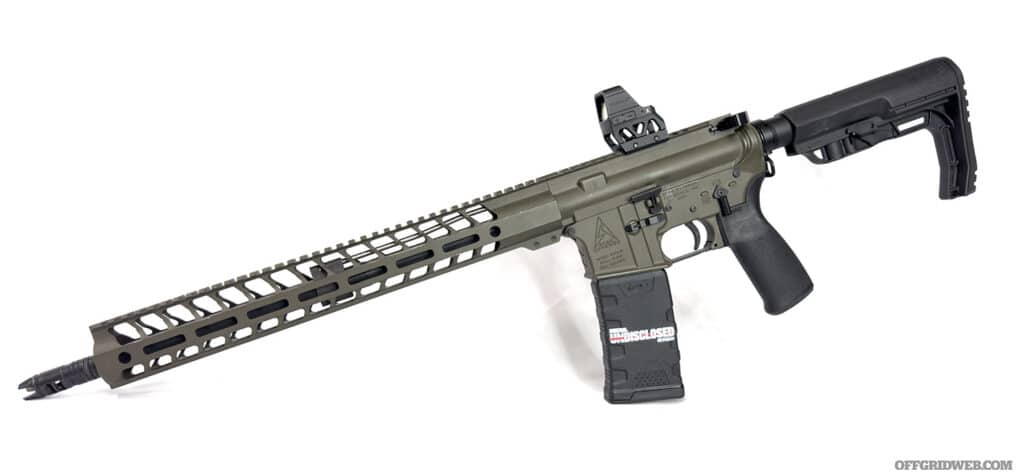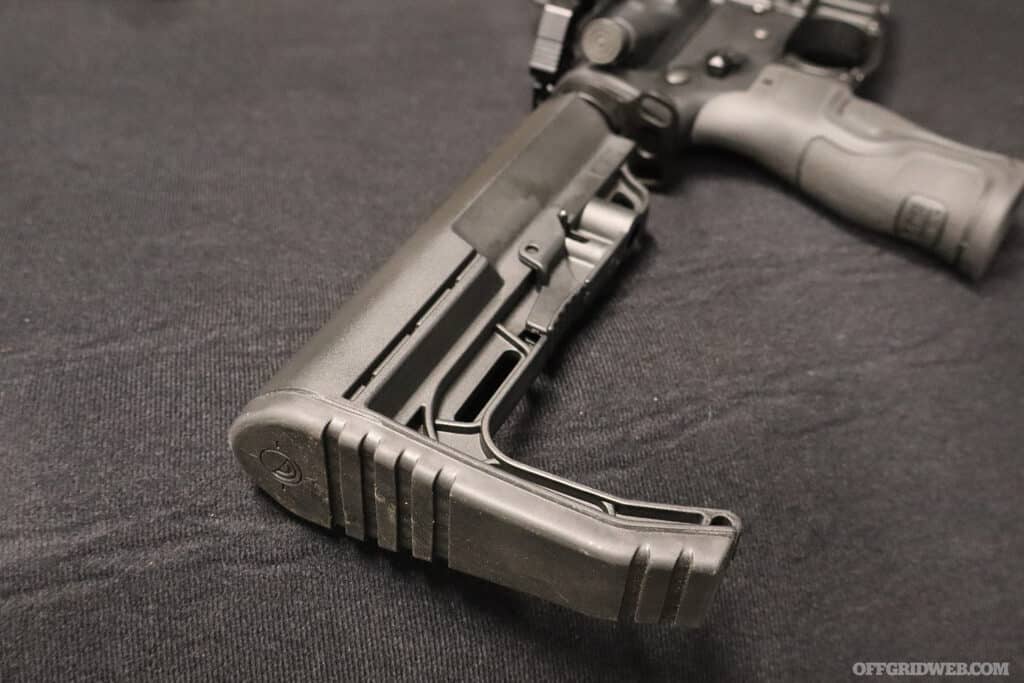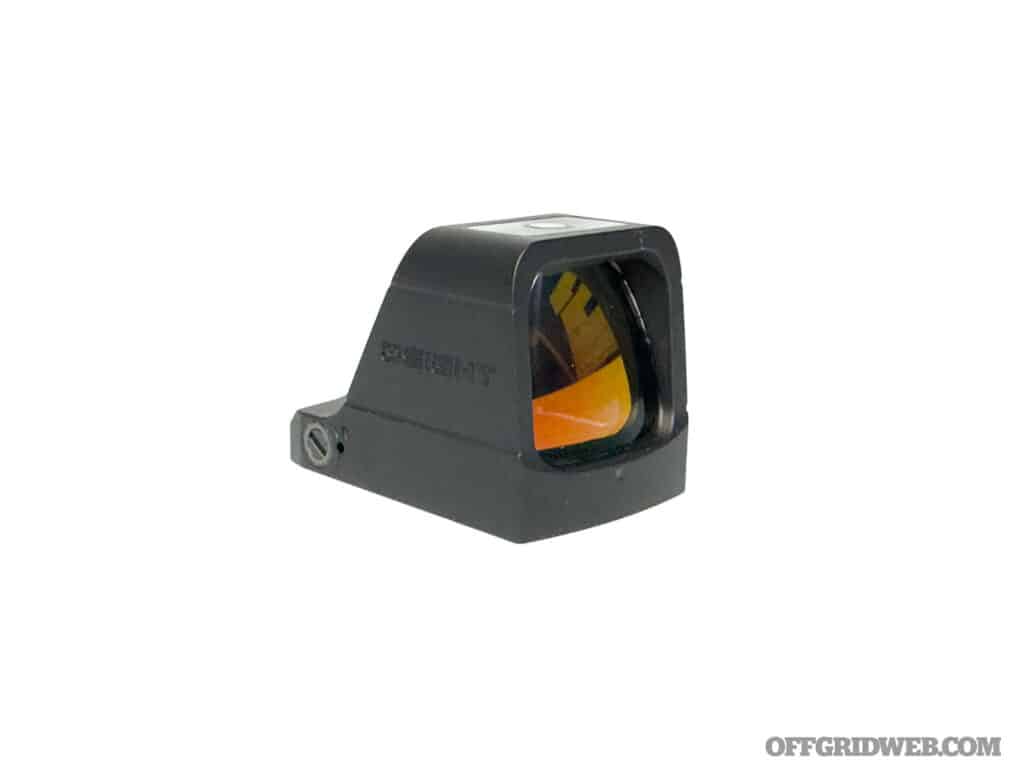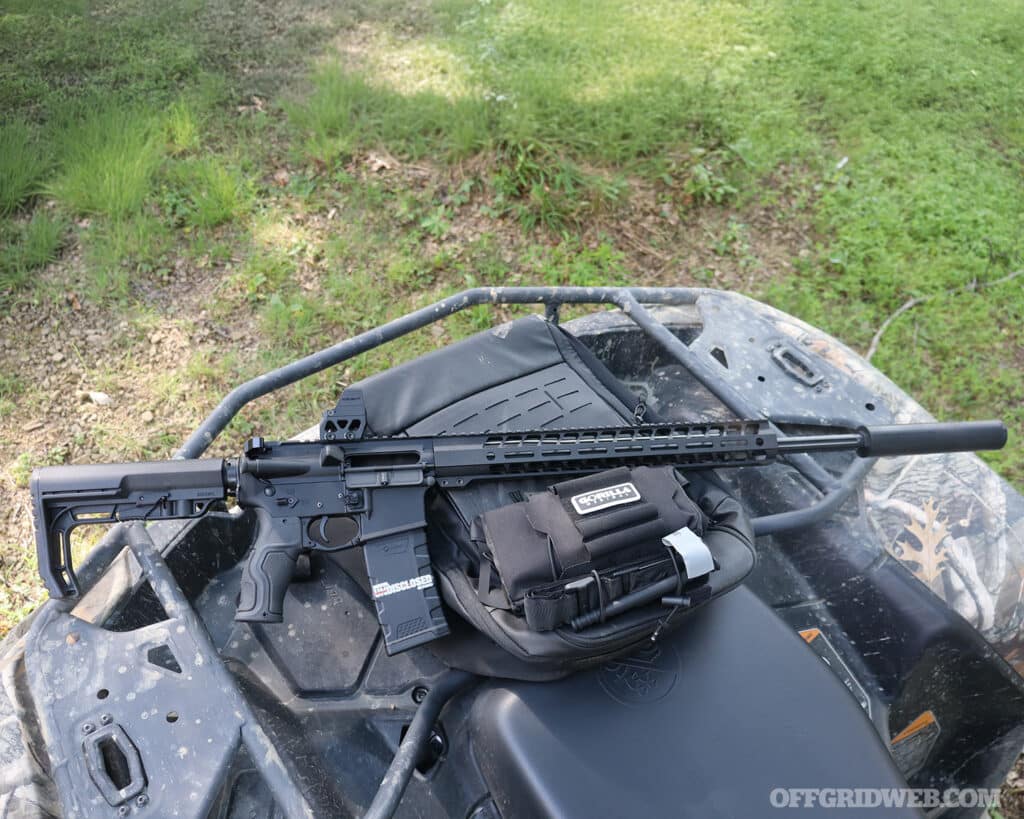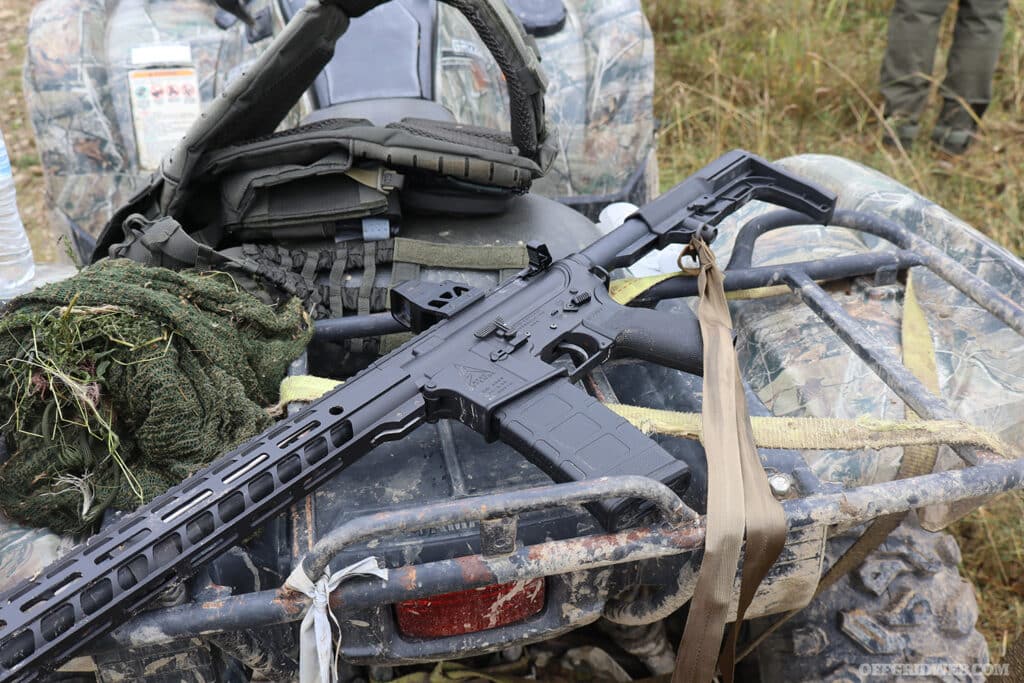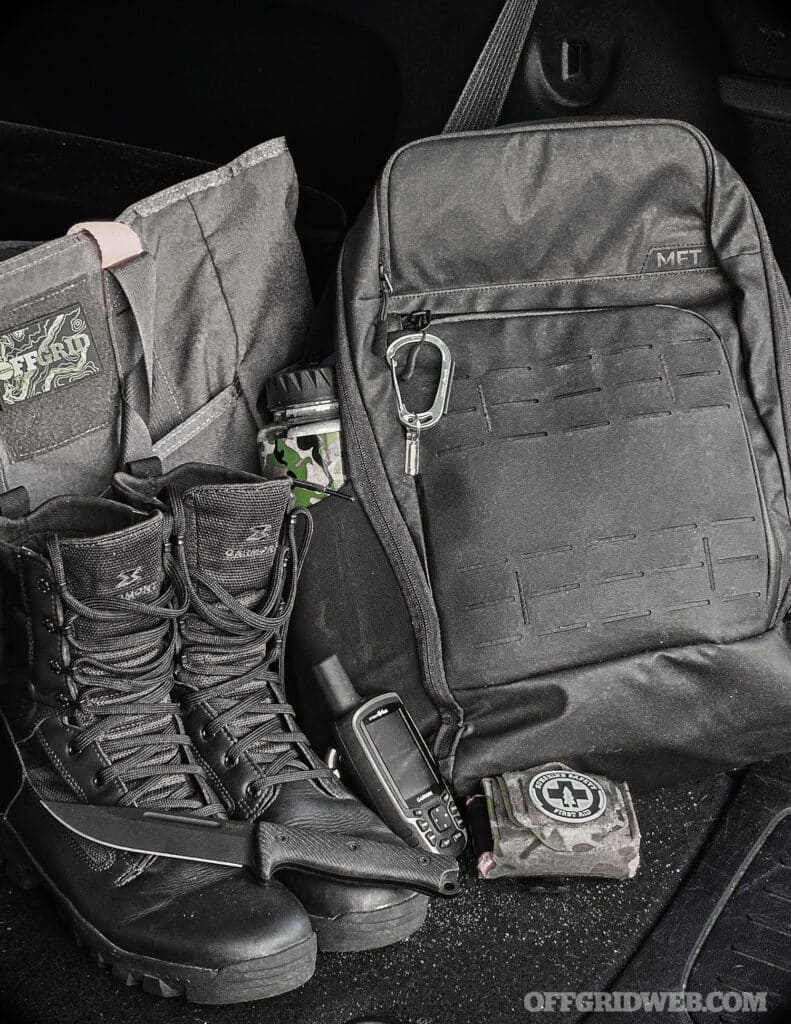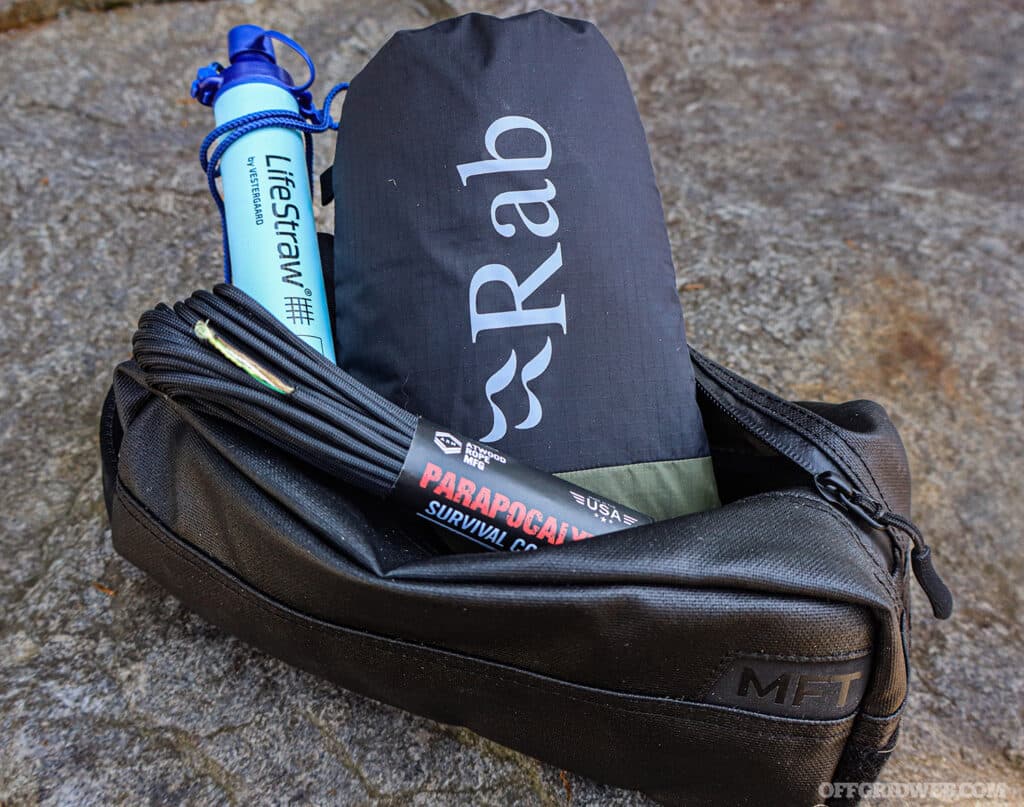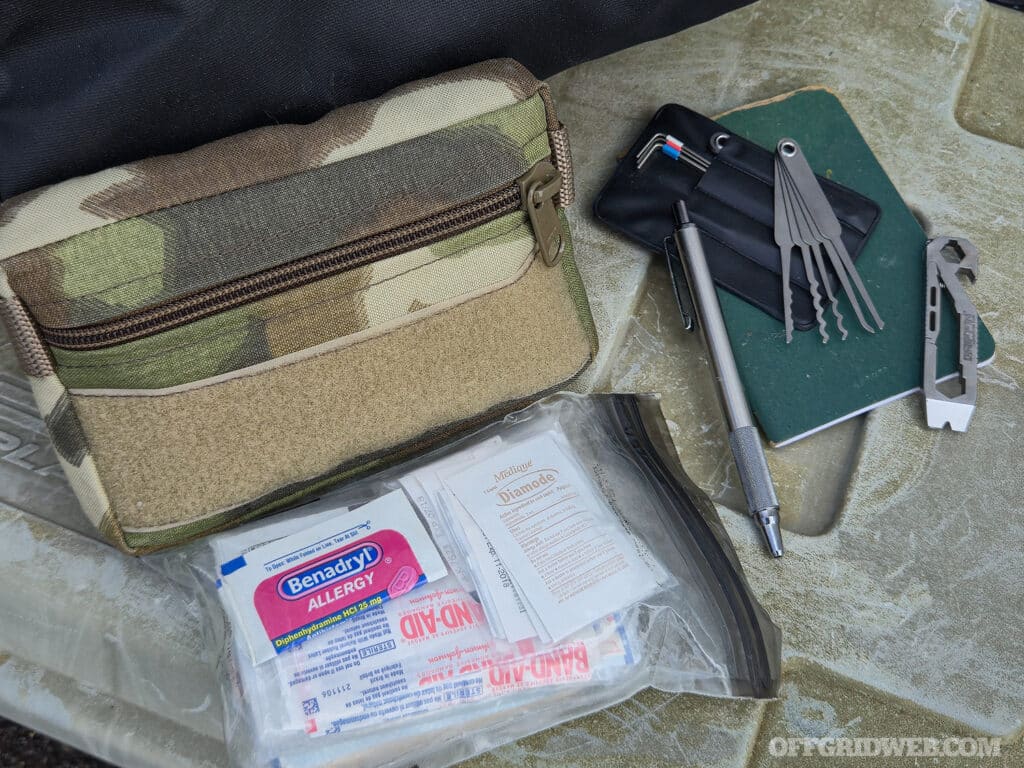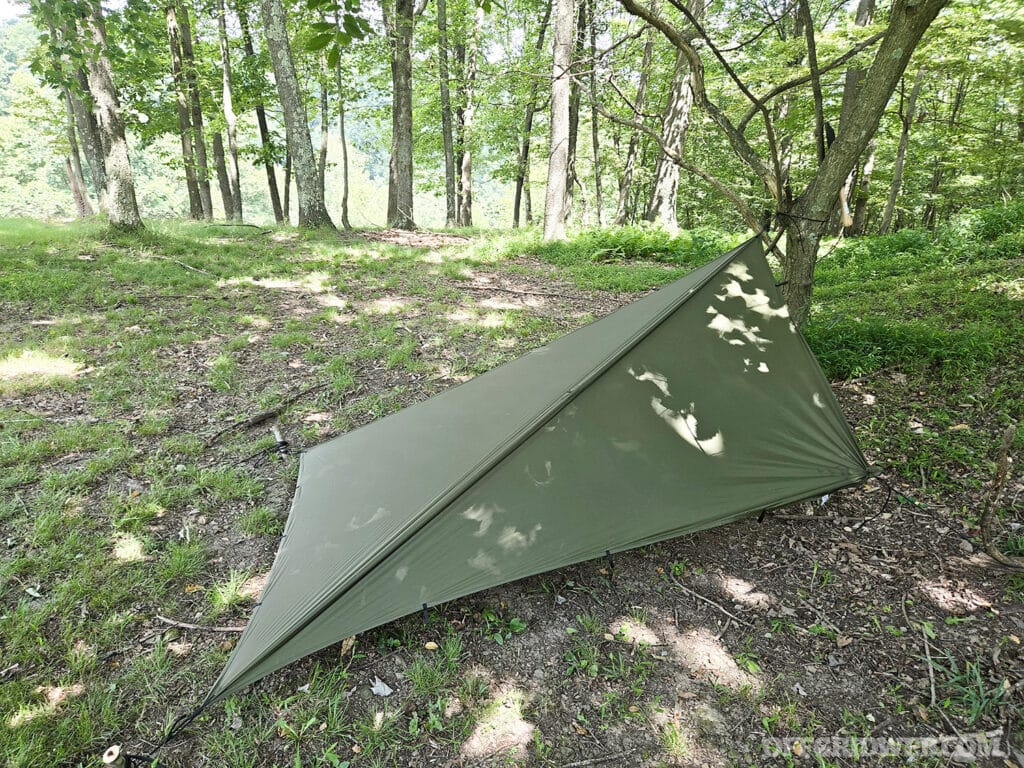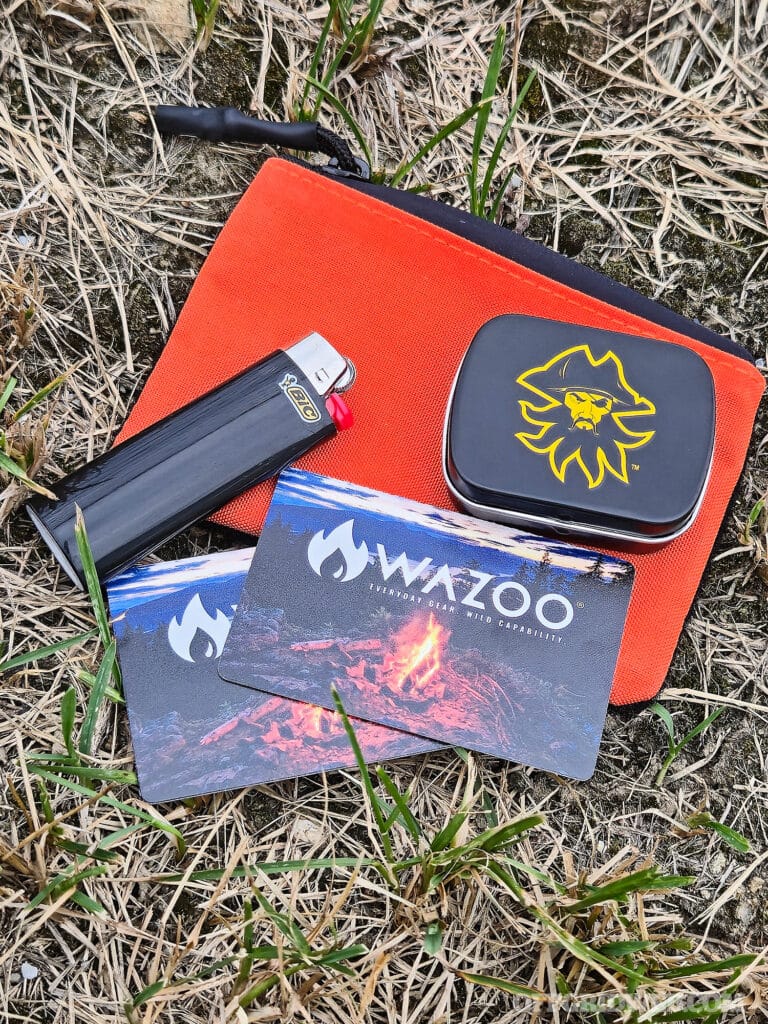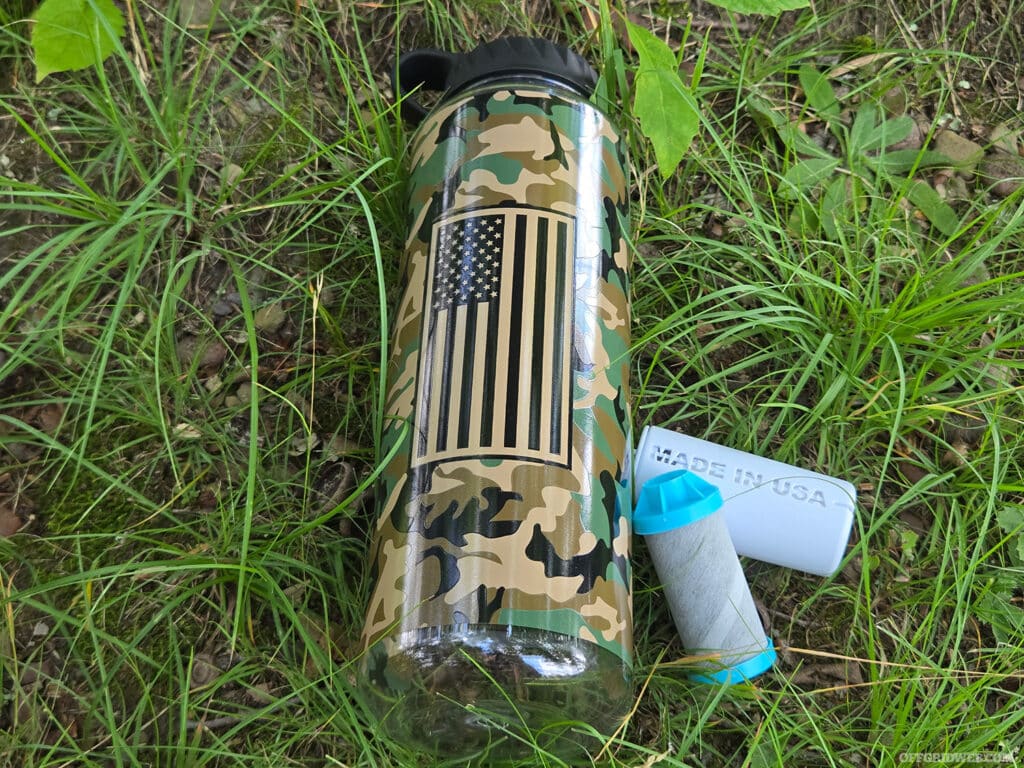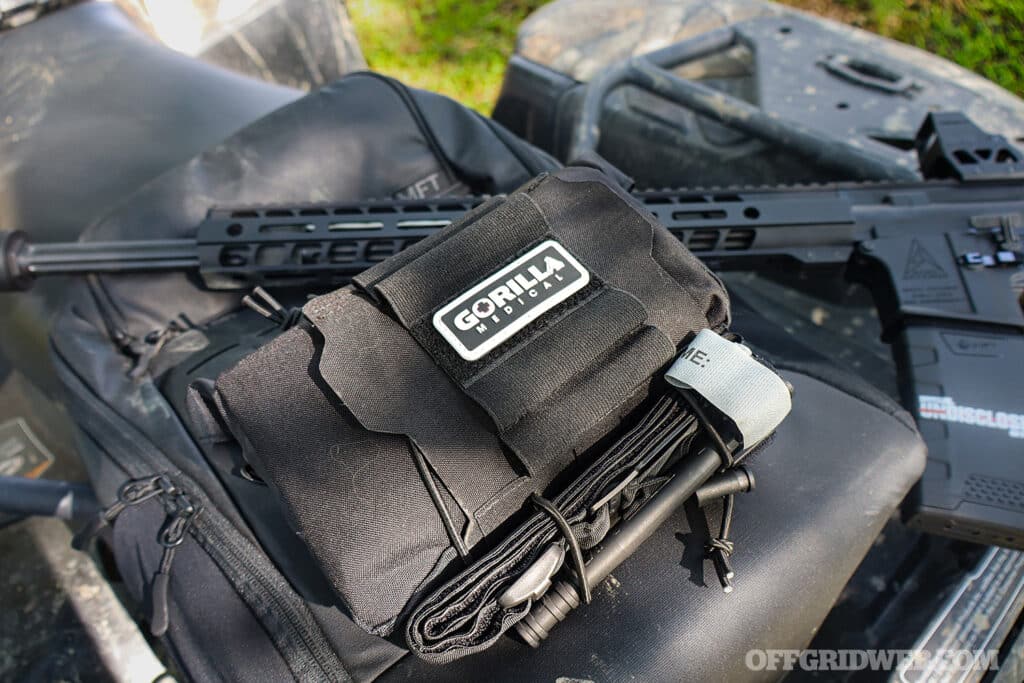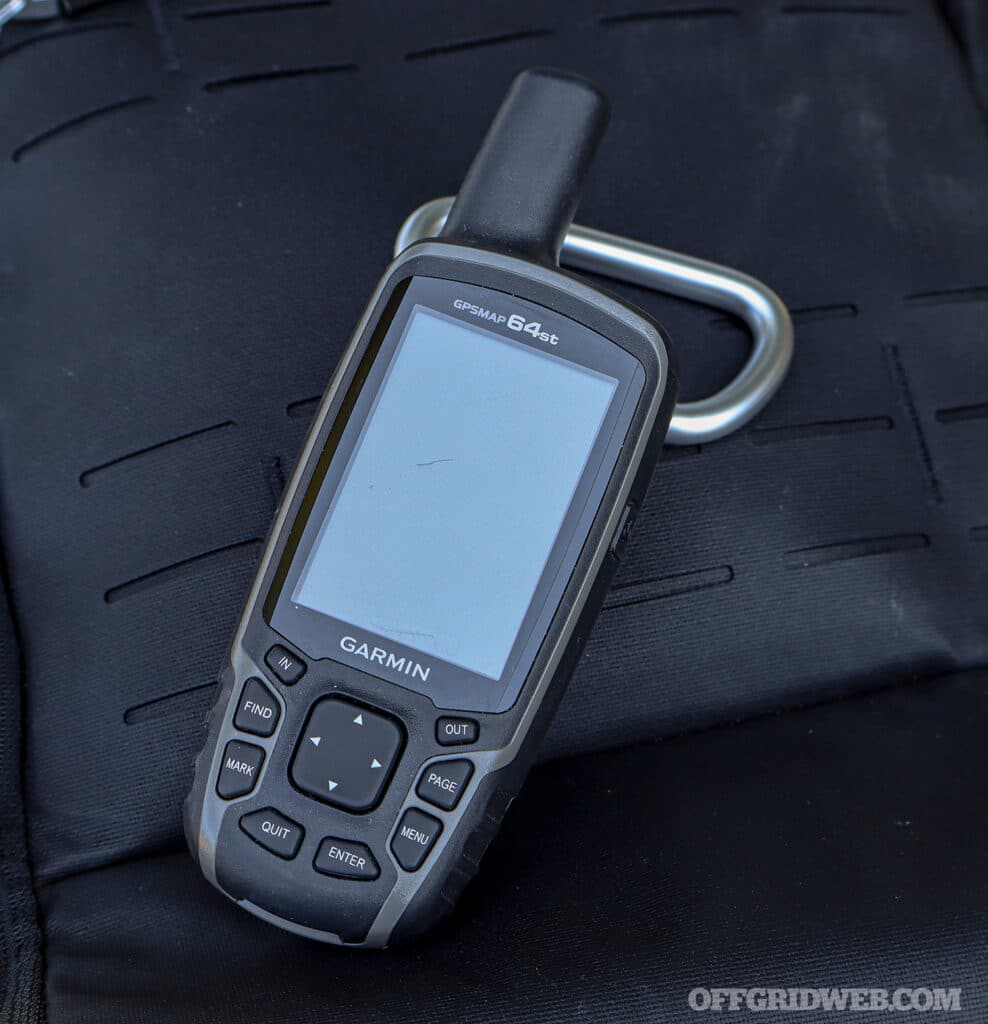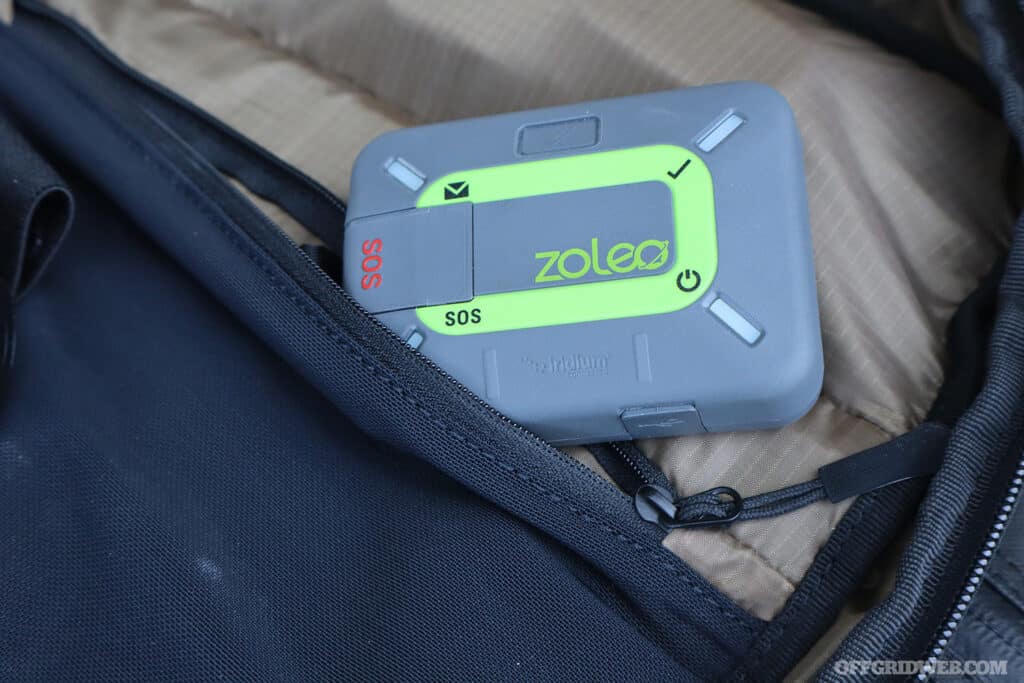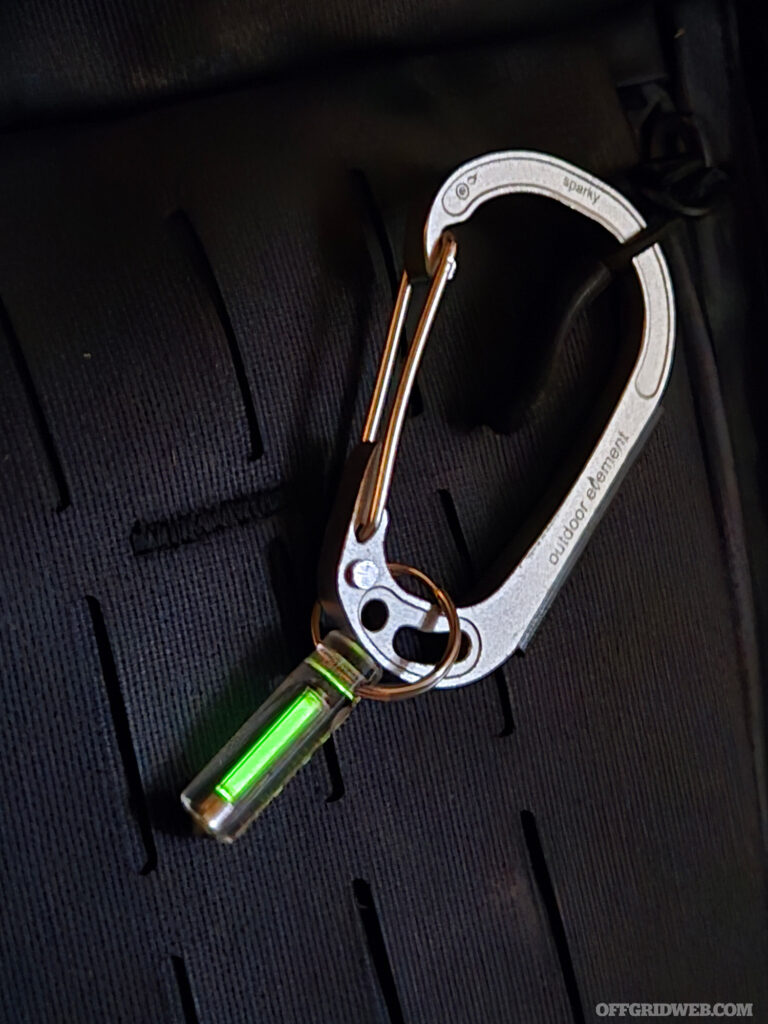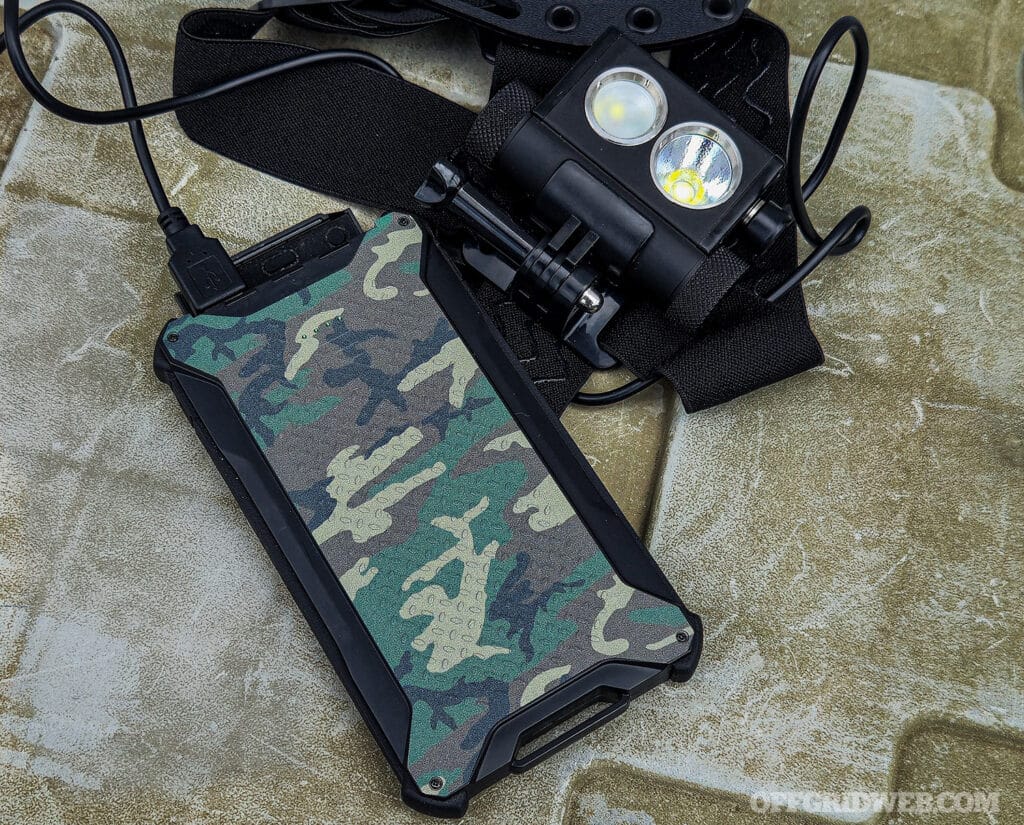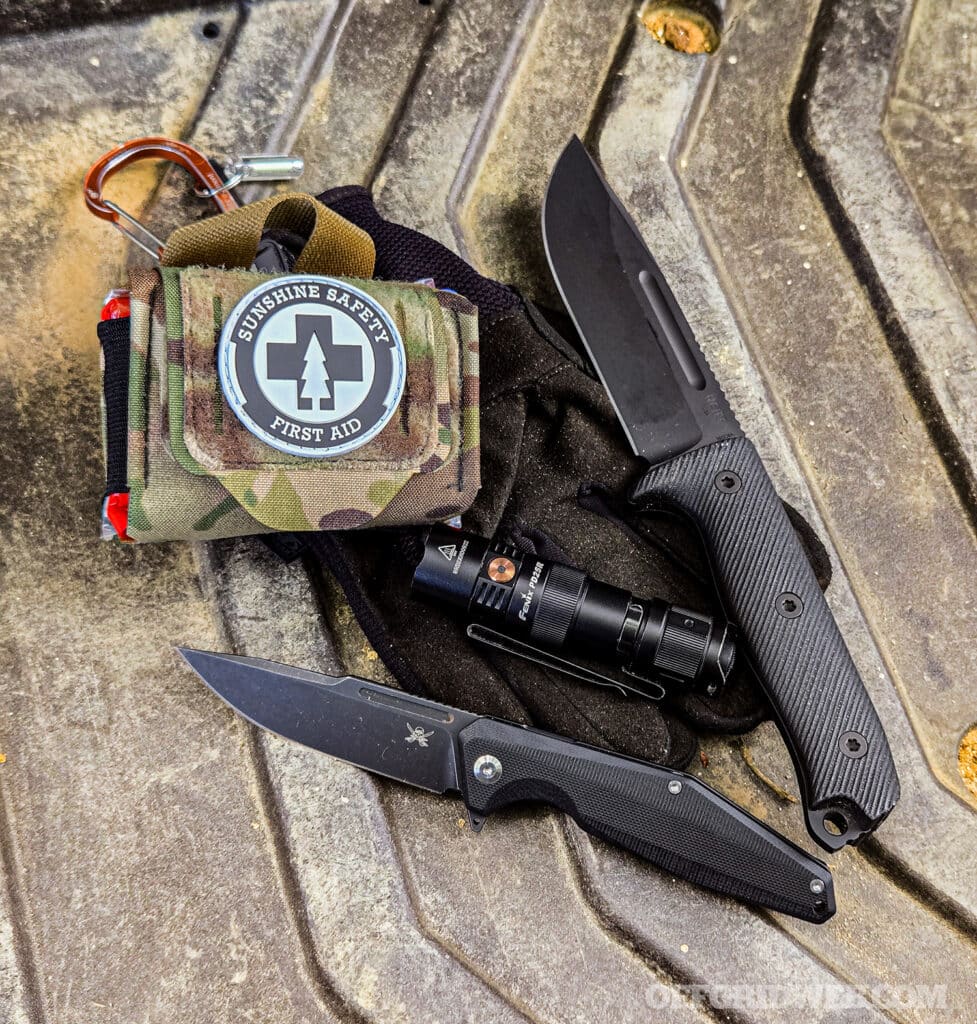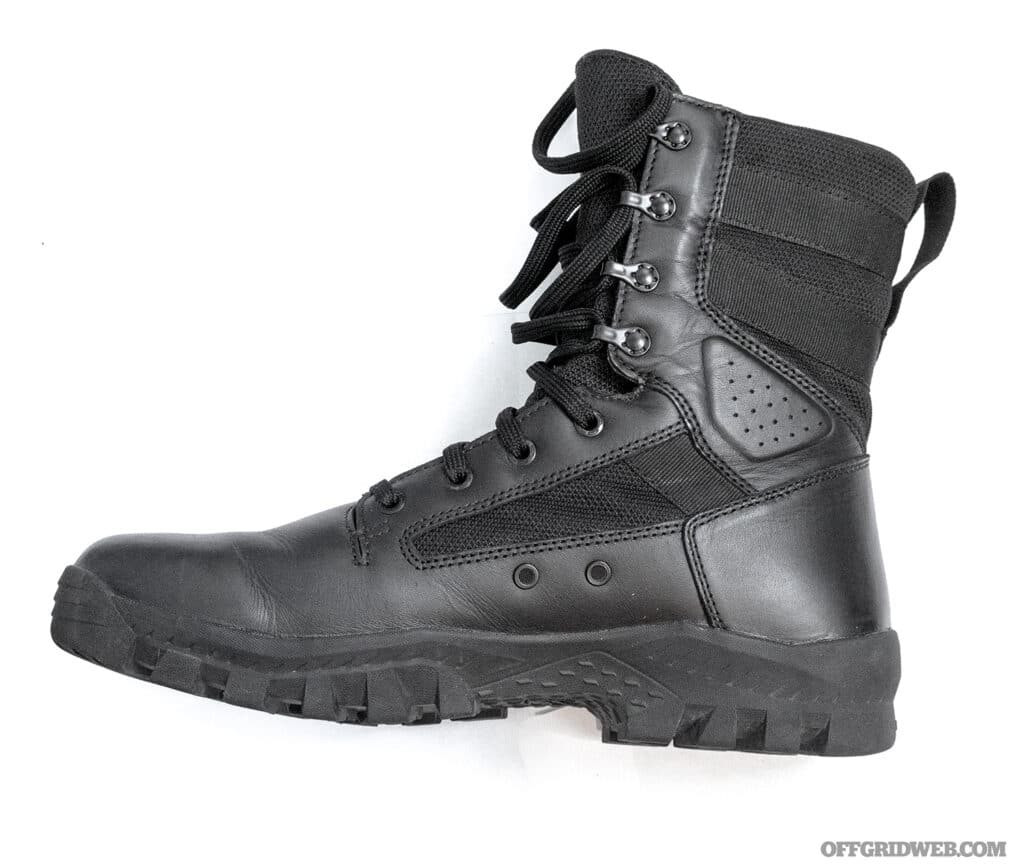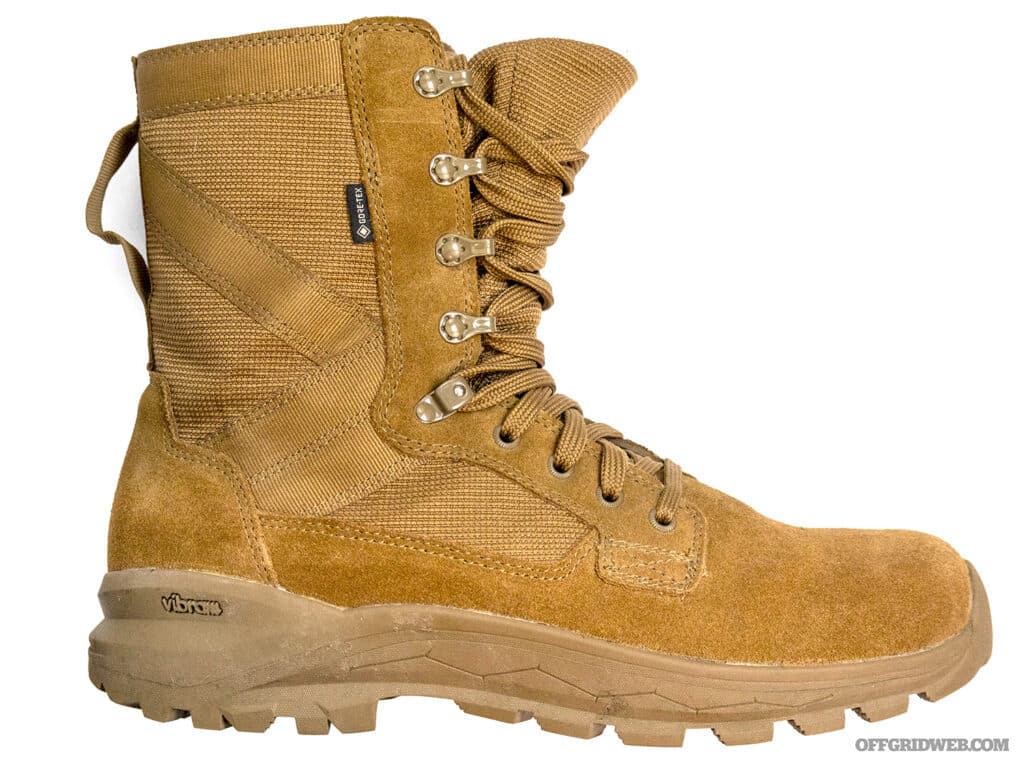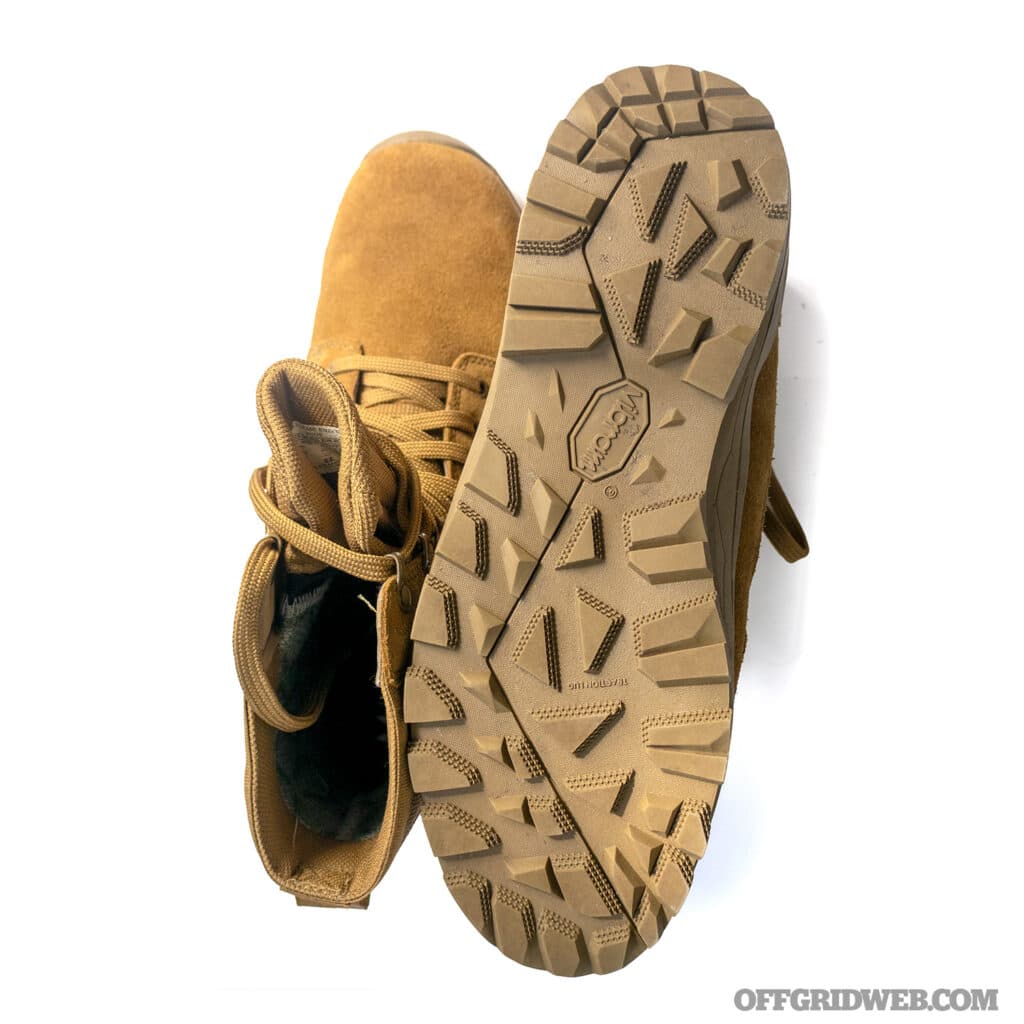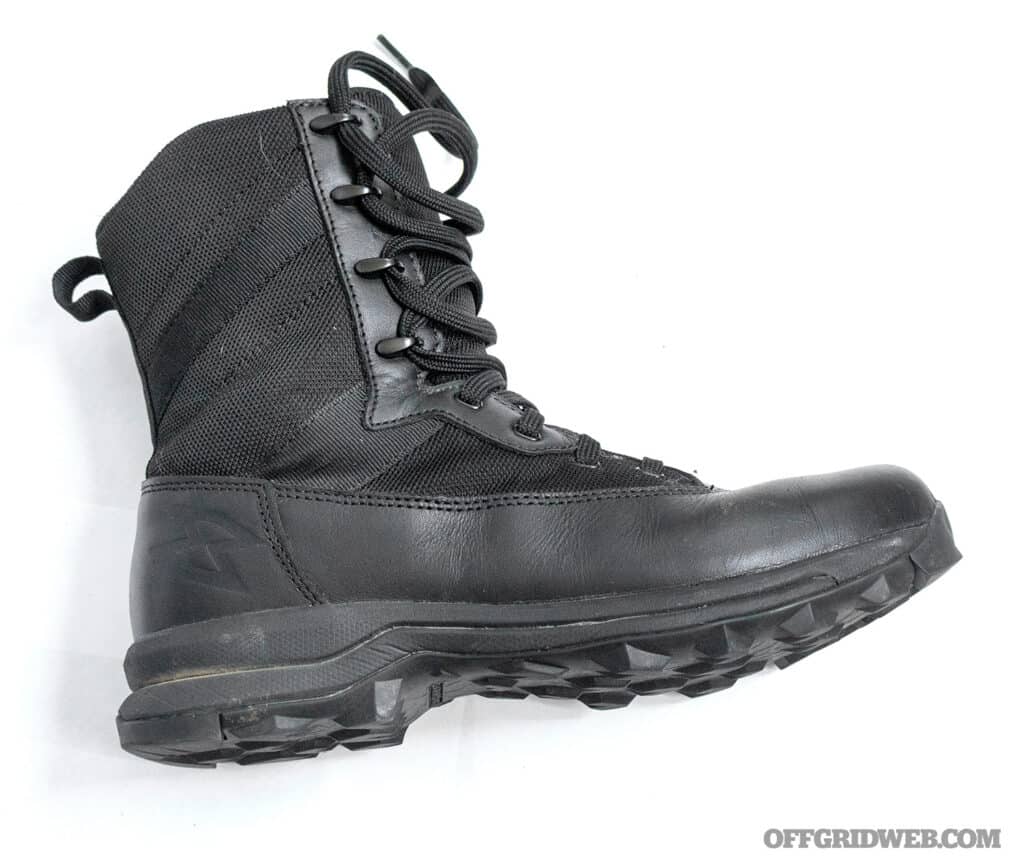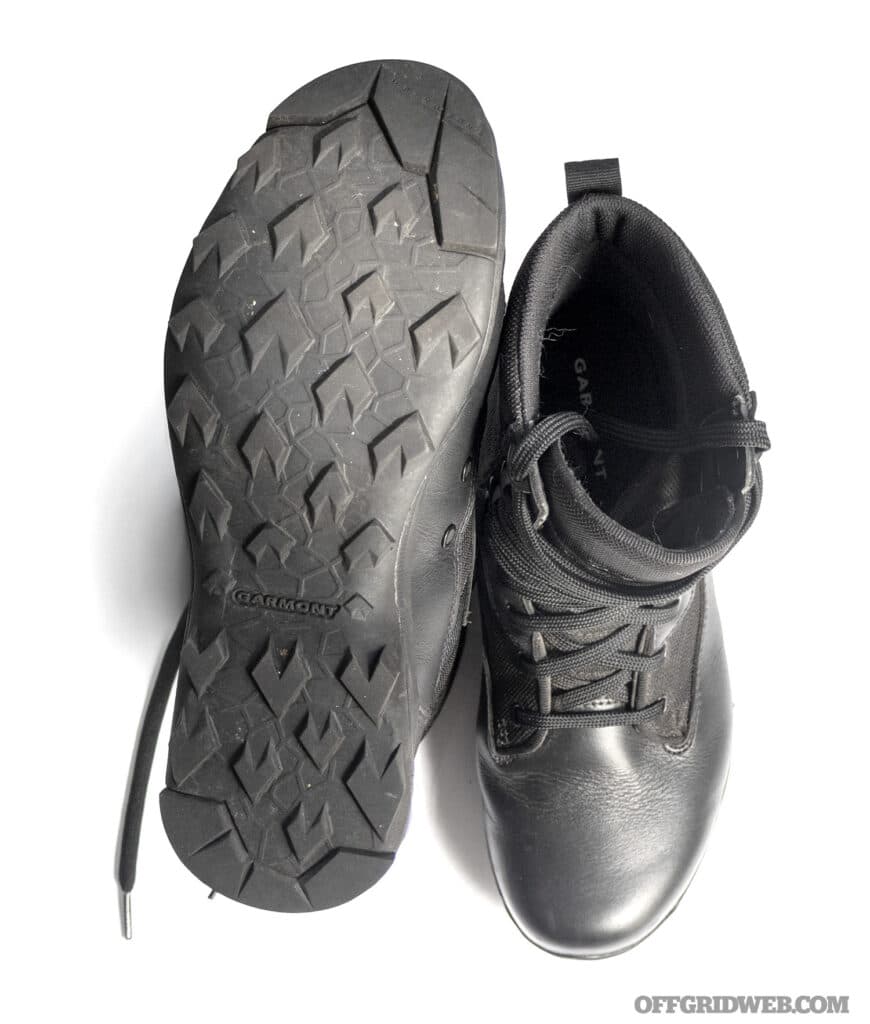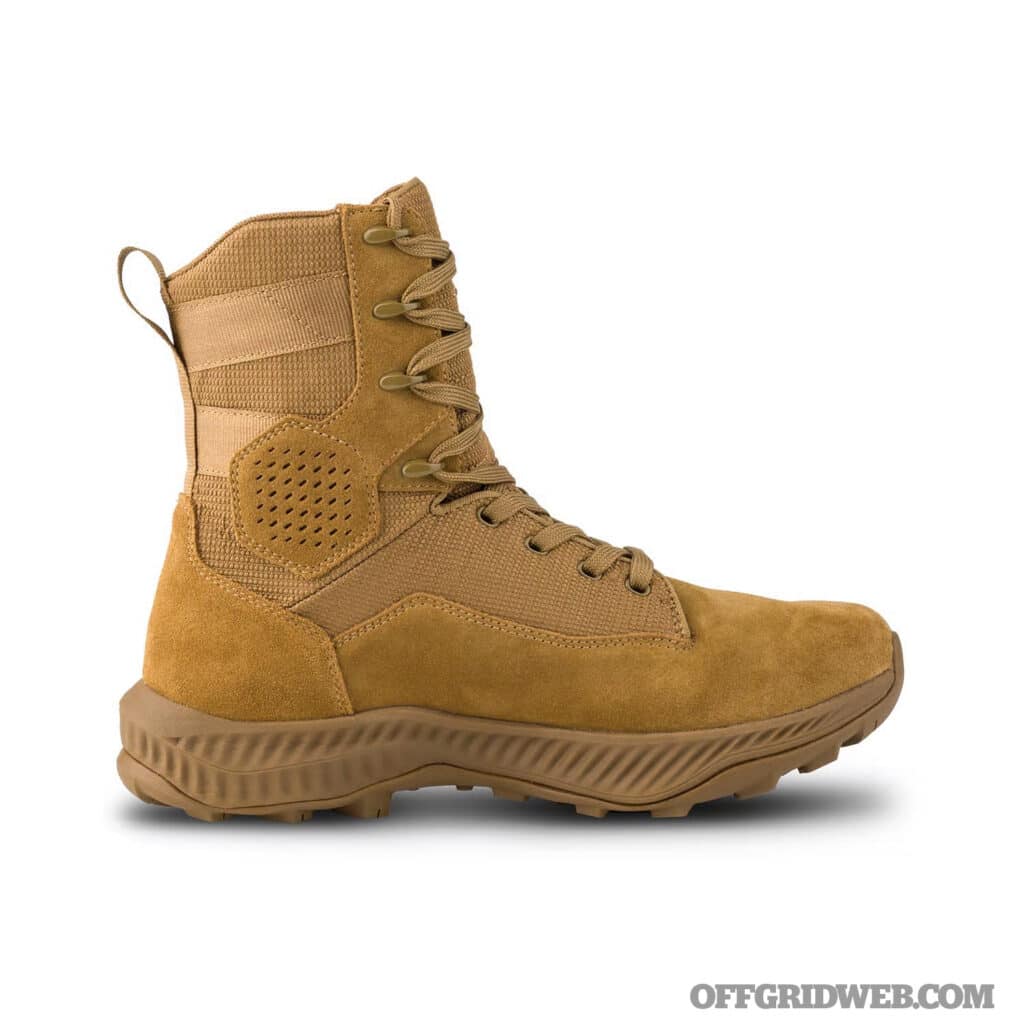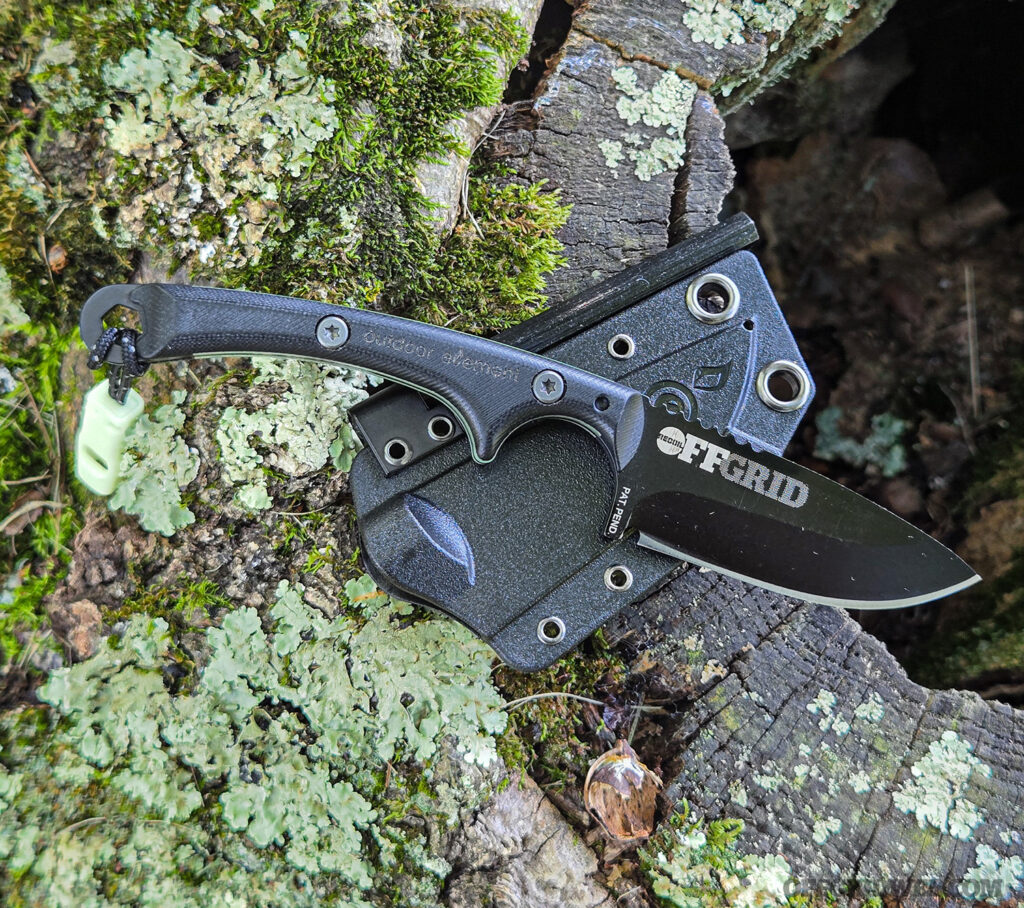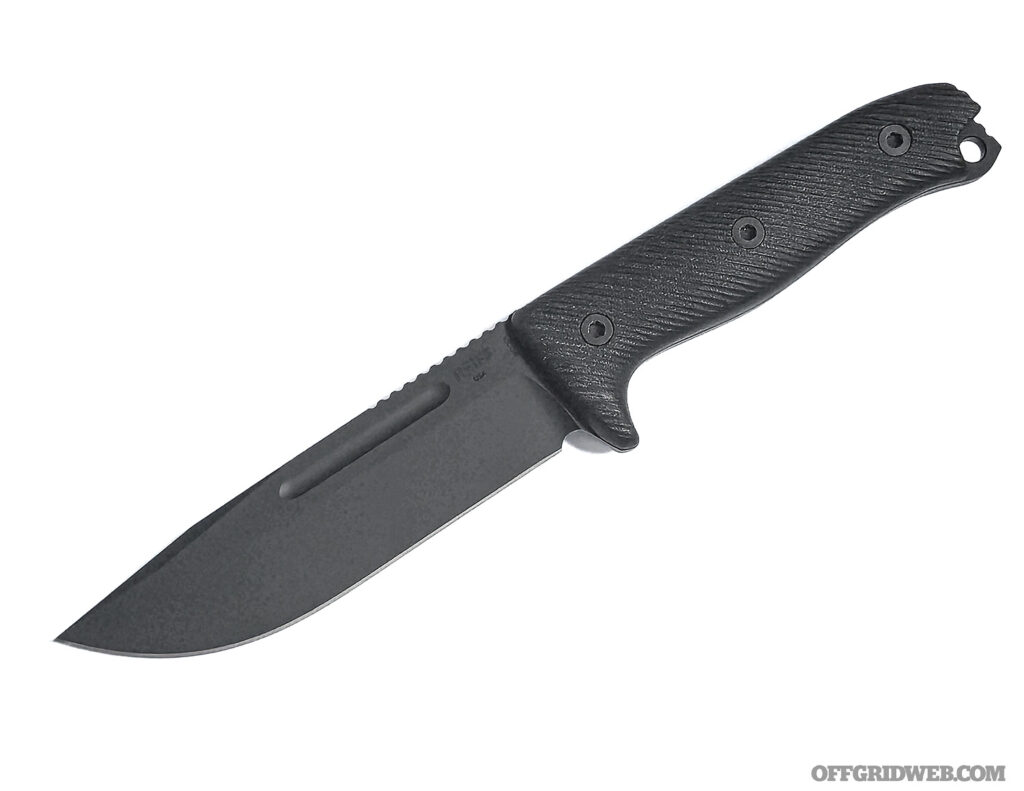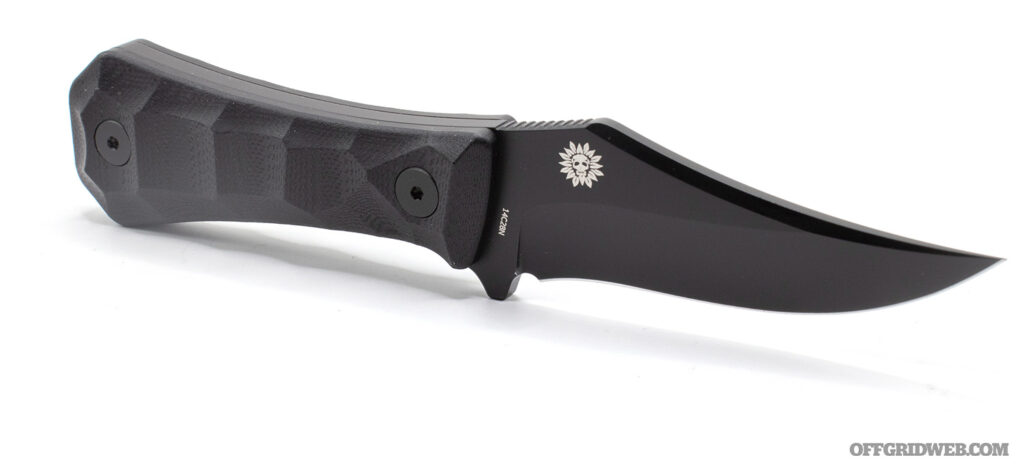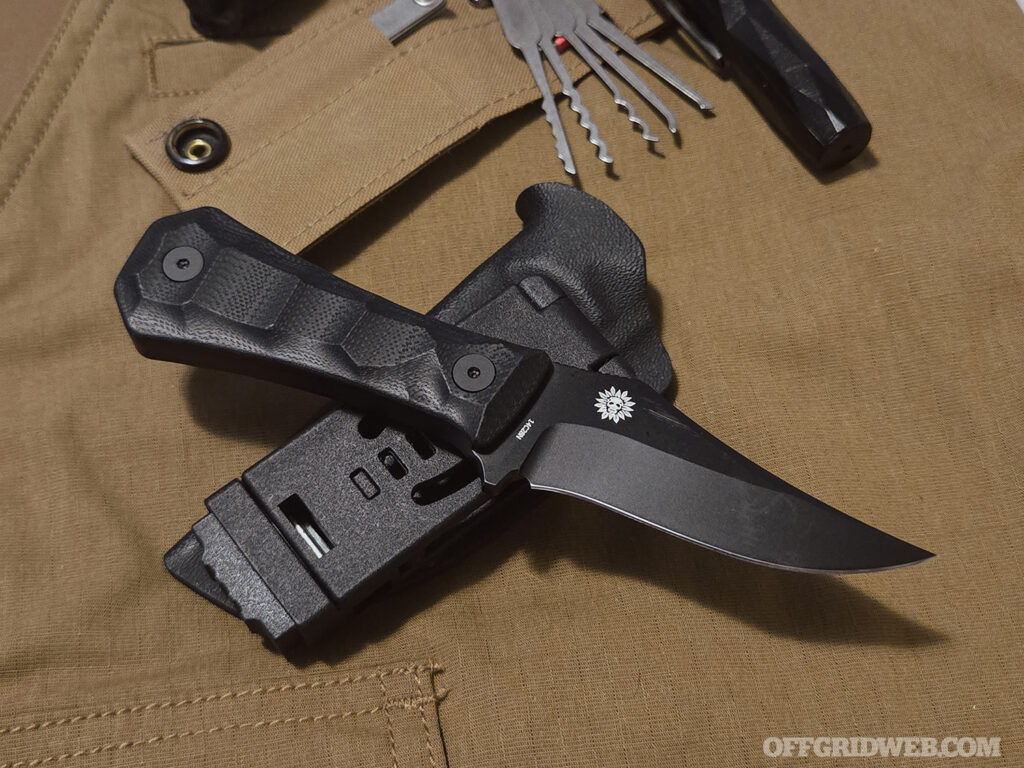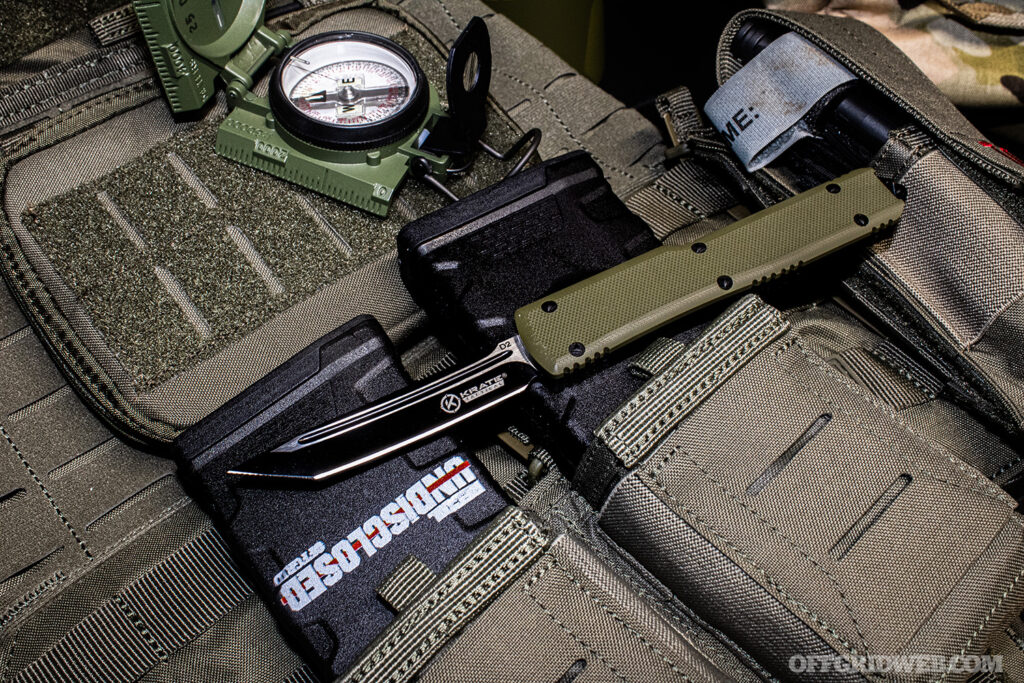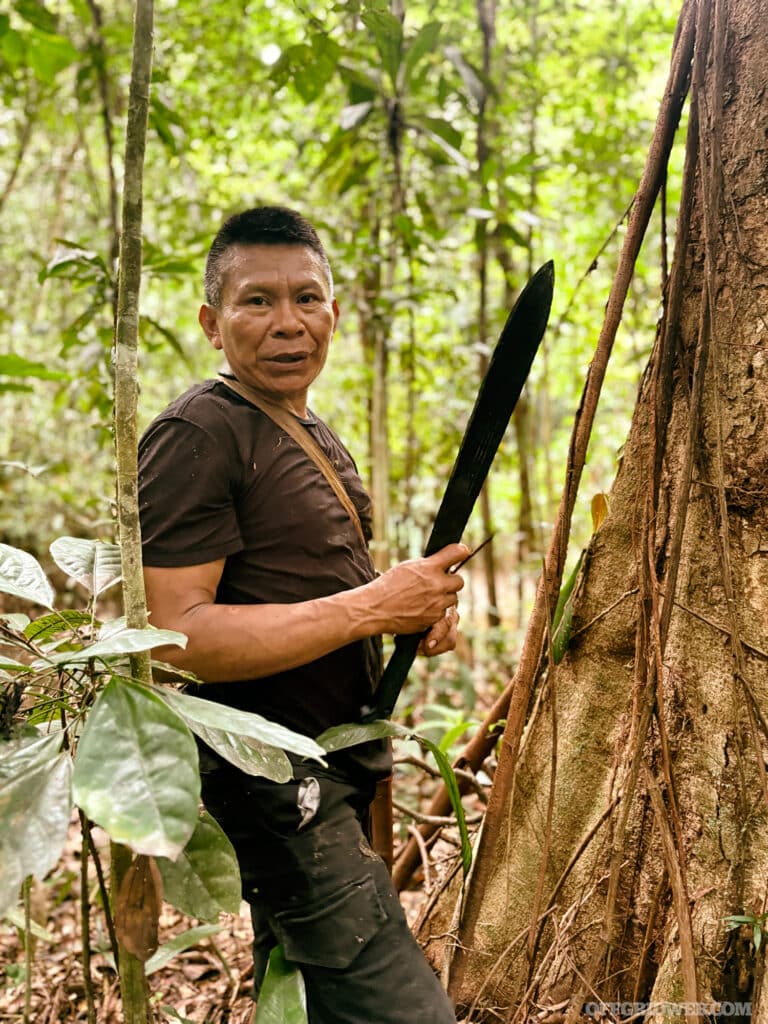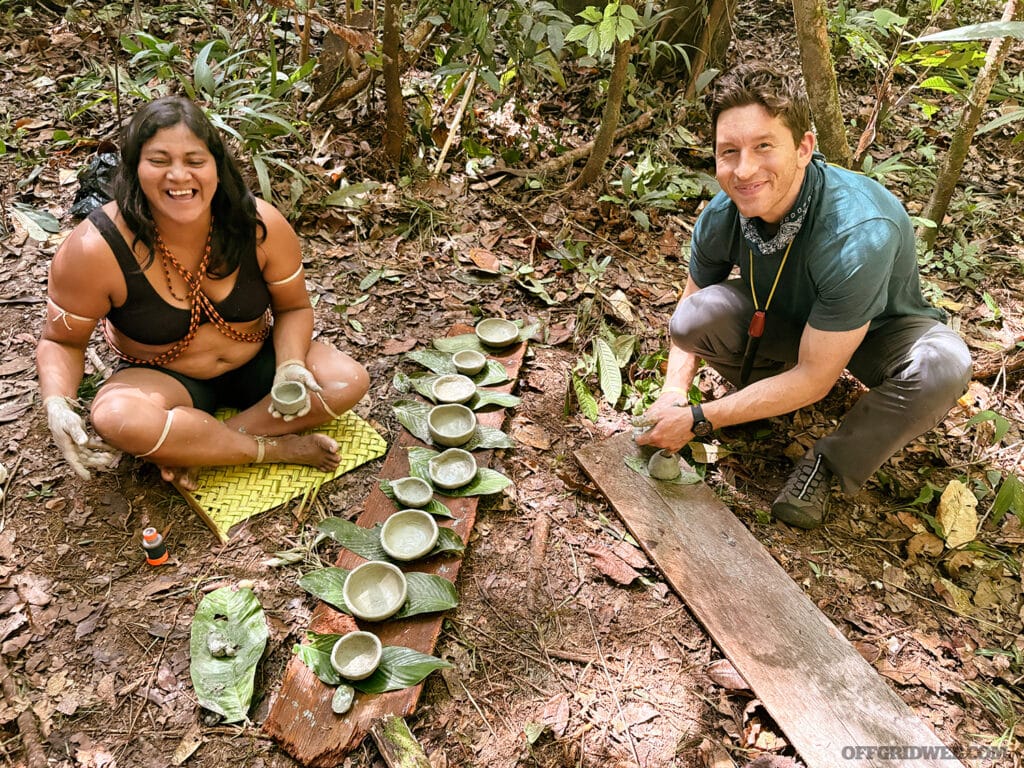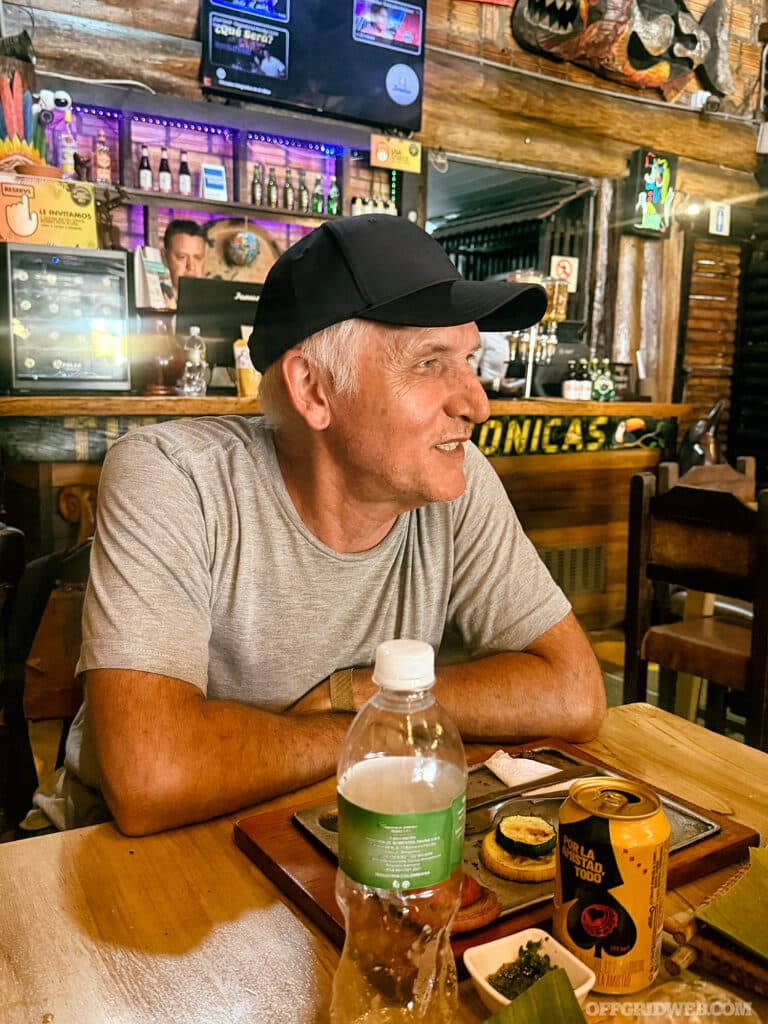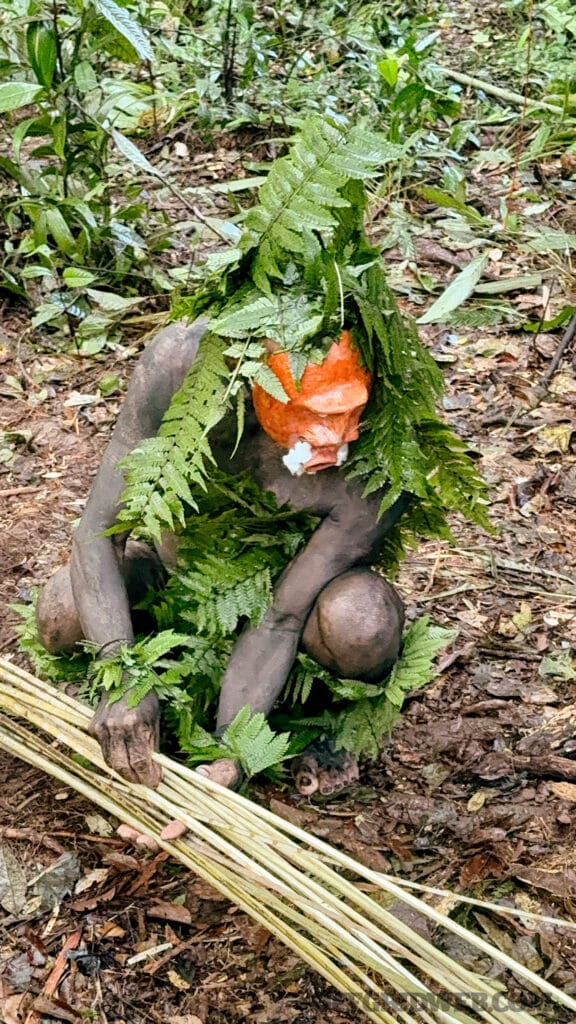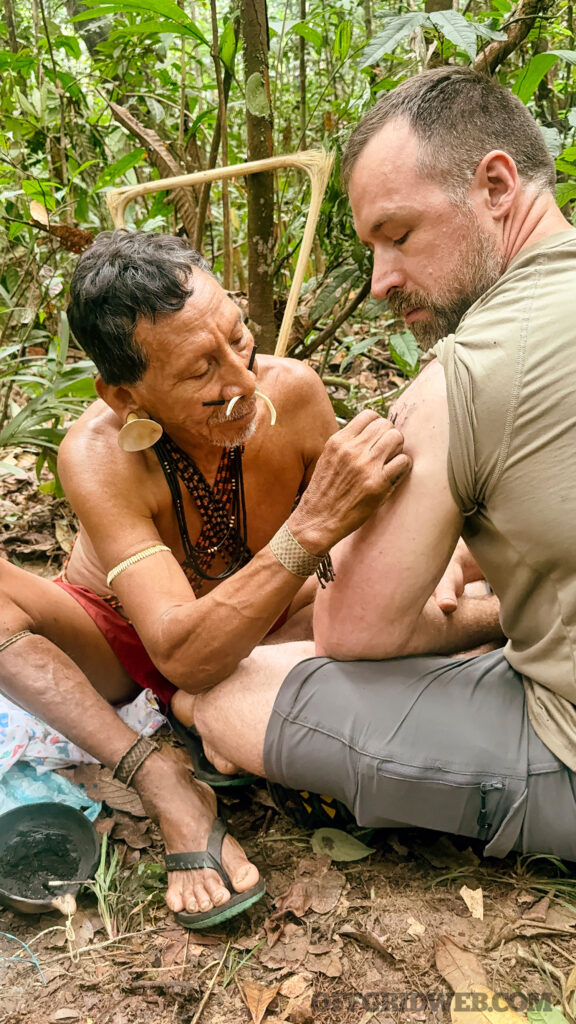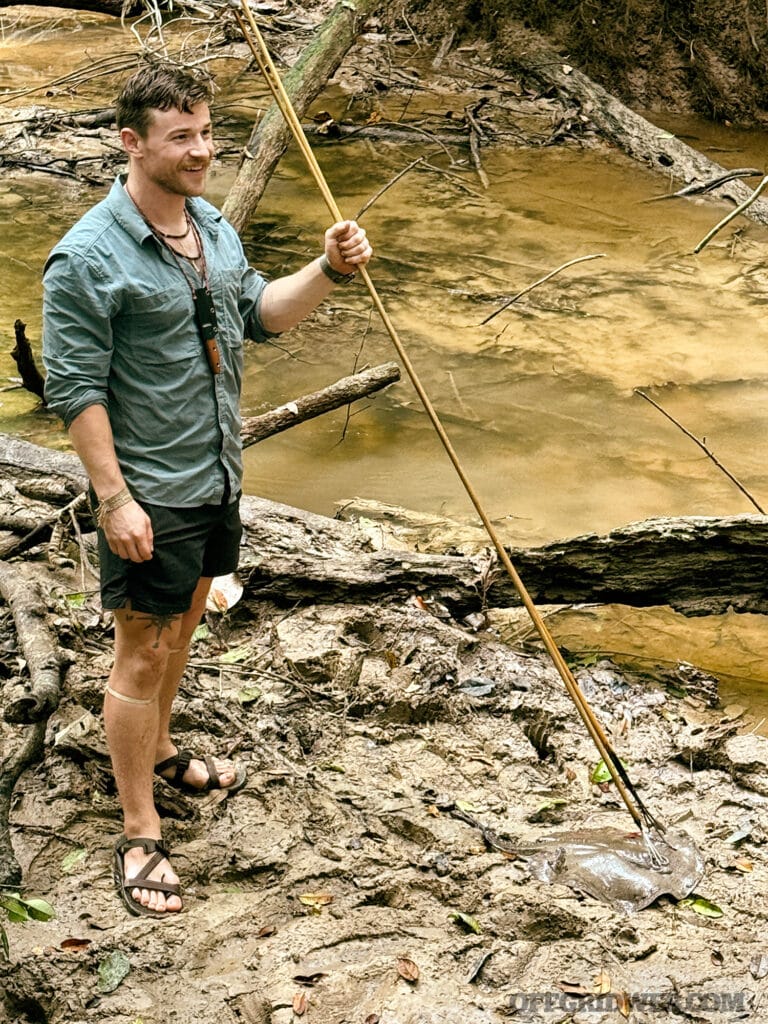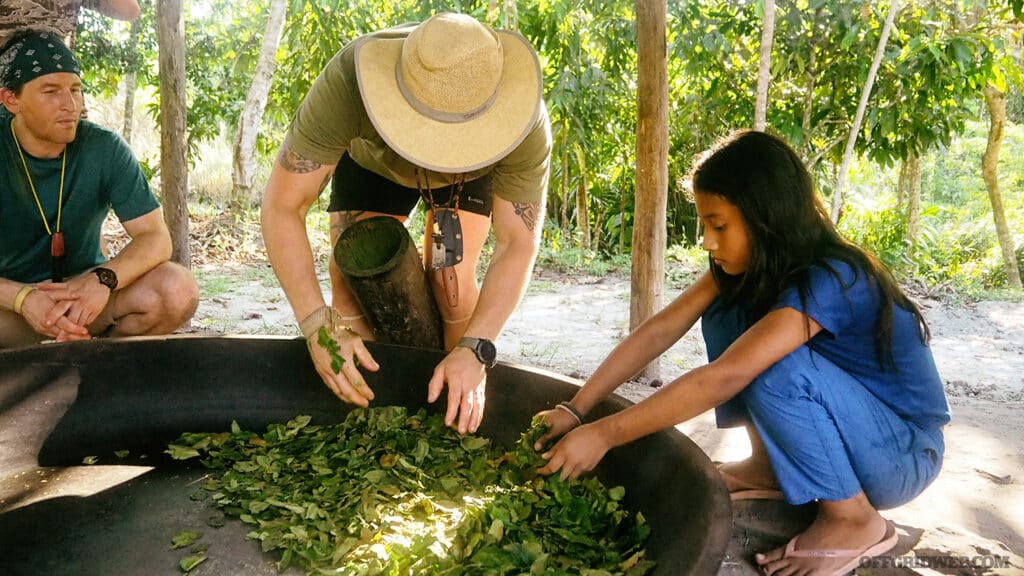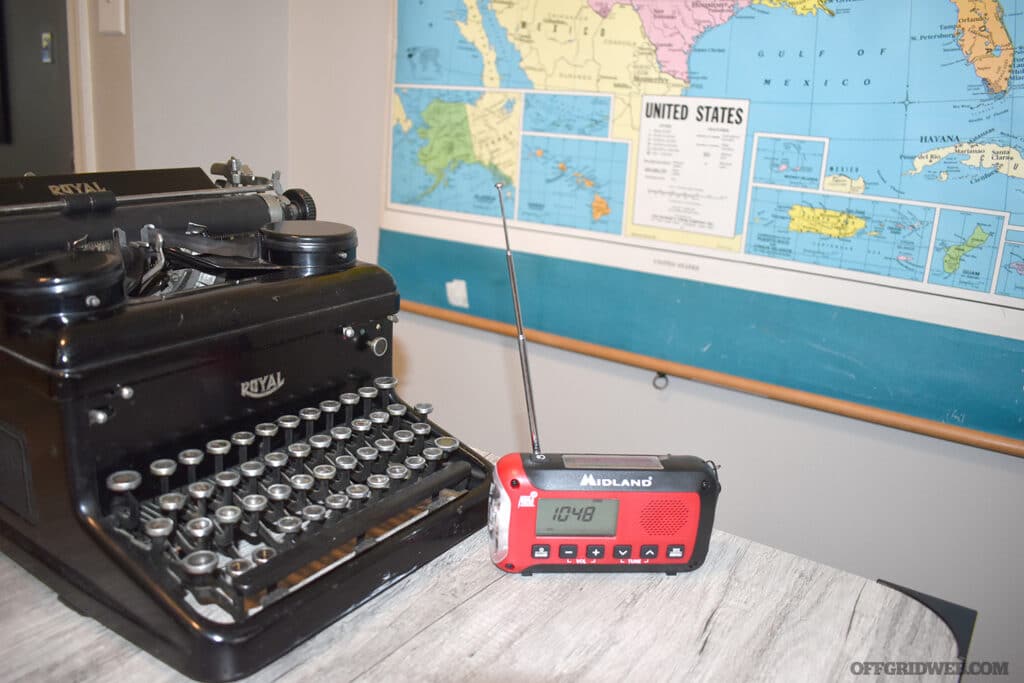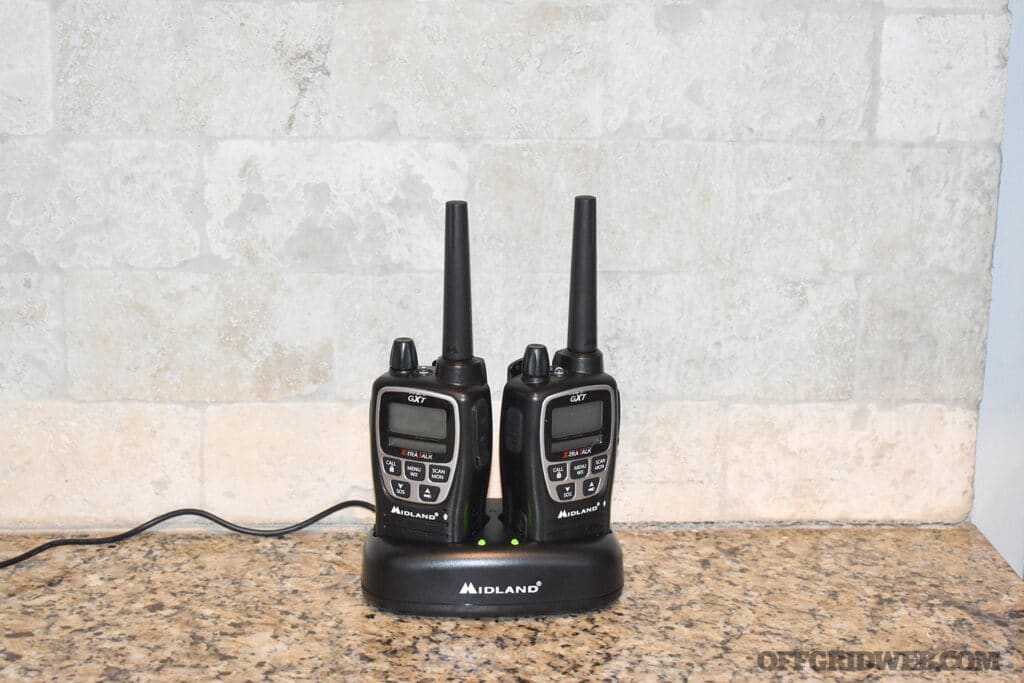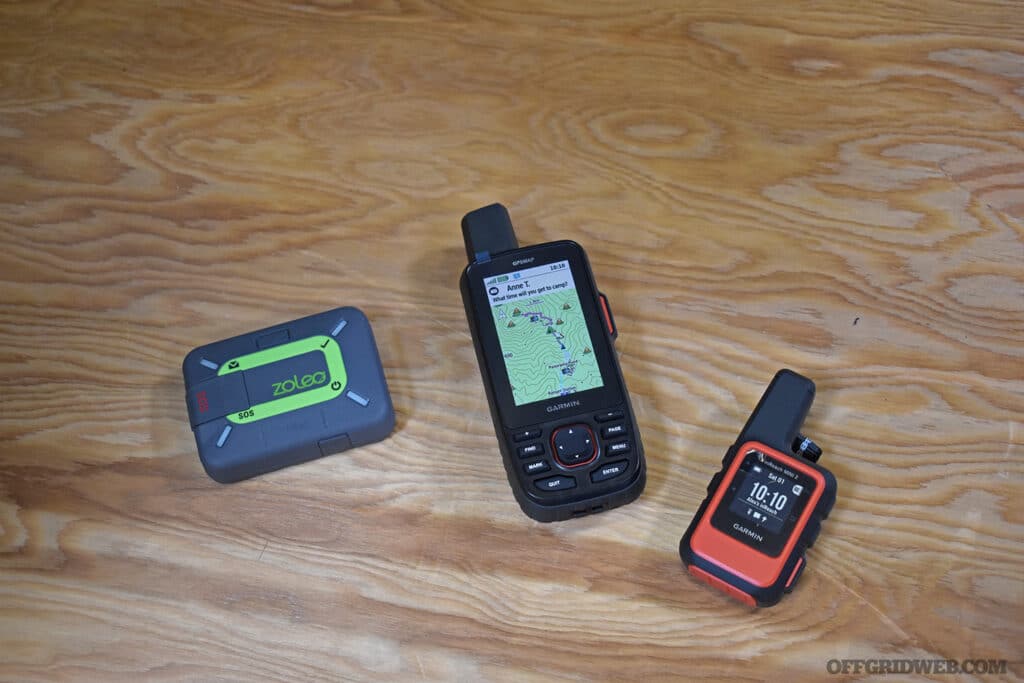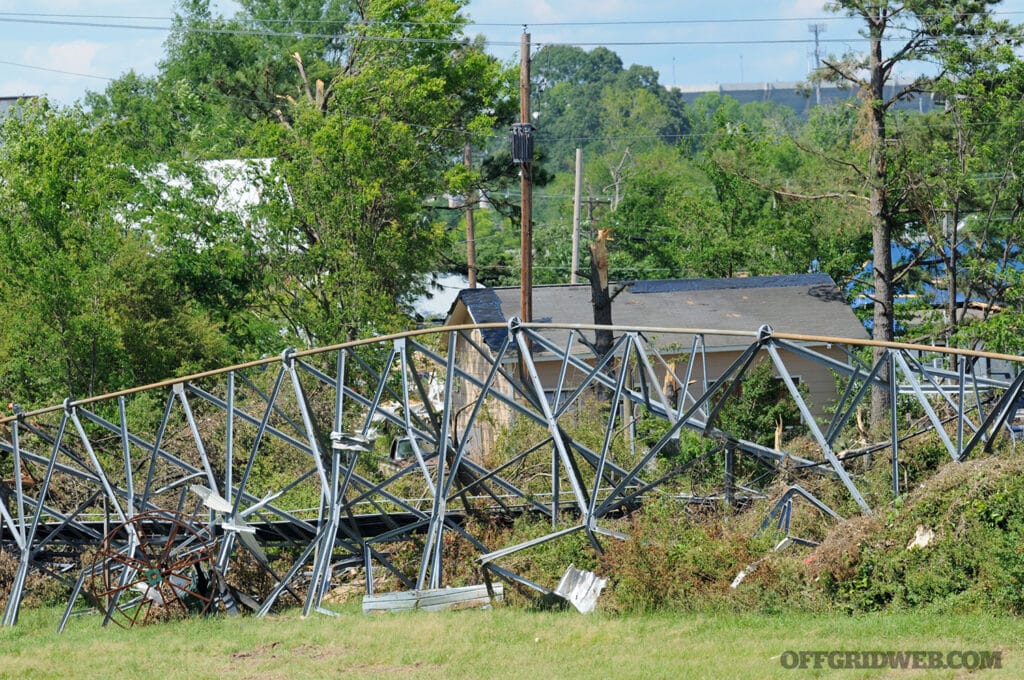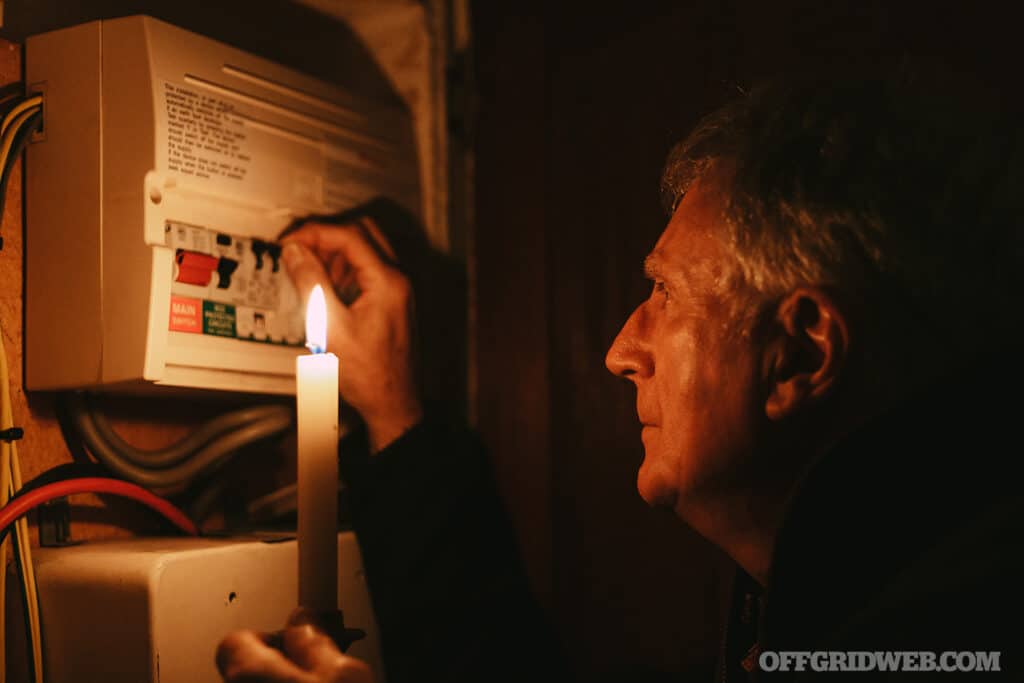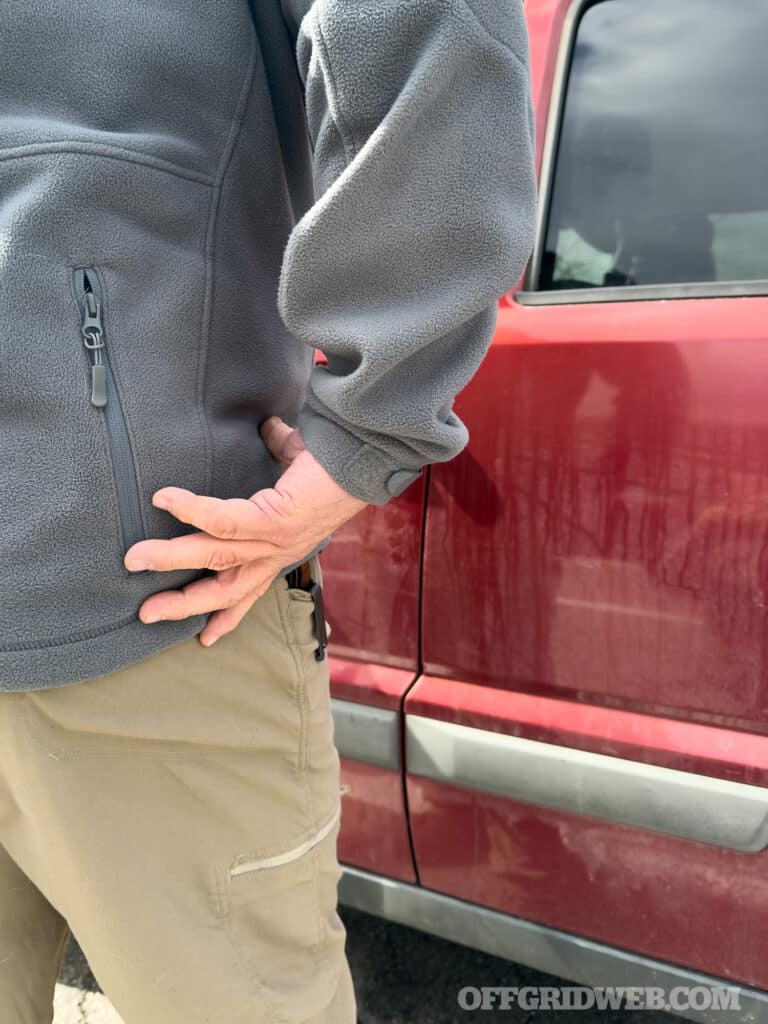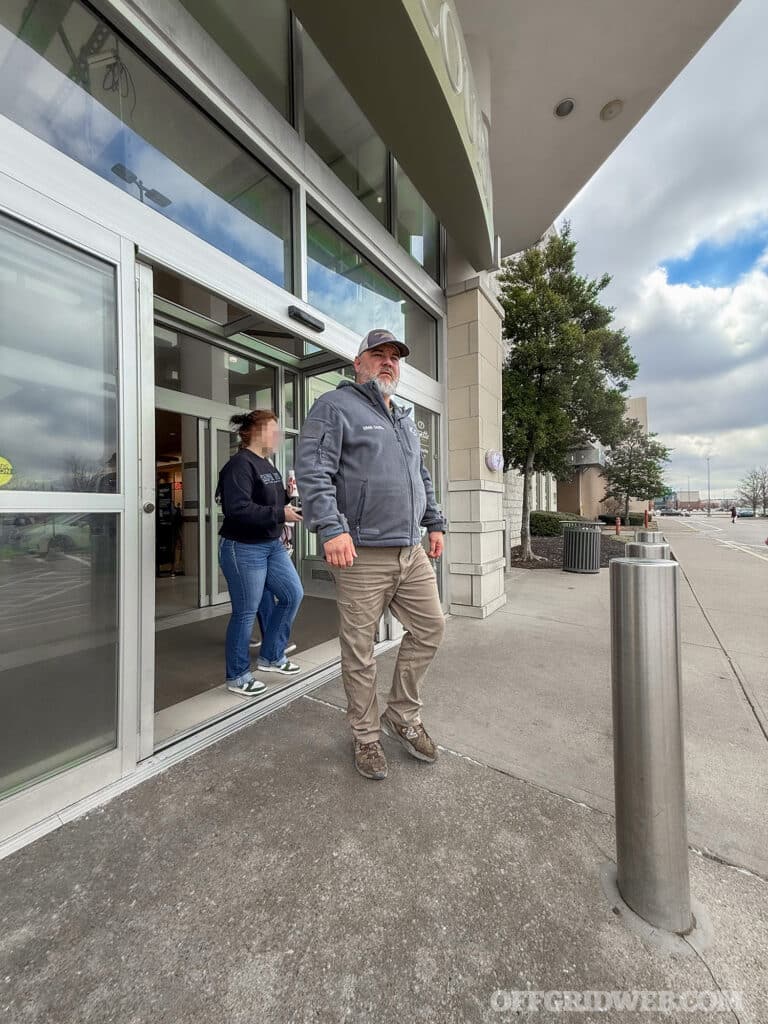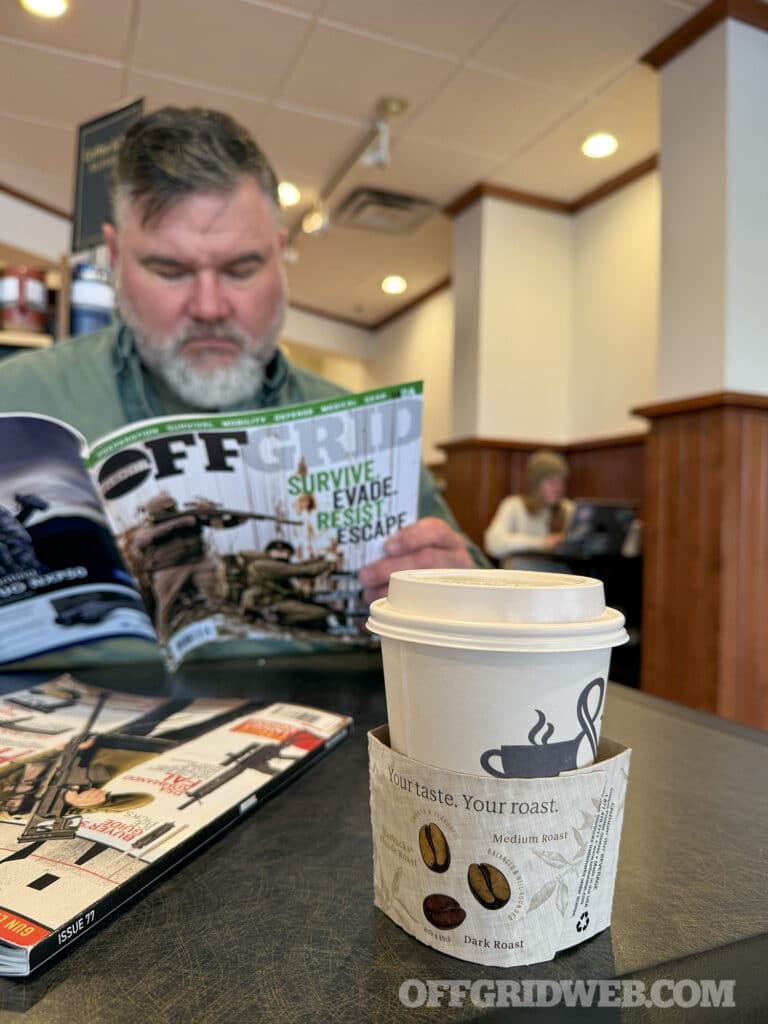In This Article
I did not expect to start a training course taped to a chair. Wrists bound to the armrests. Forearms pinned. Ankles secured to the legs of a battered office seat. There is a saying that echoes through survival circles, “You do not rise to the occasion. You sink to your lowest level of training.” It sounded dramatic when I first heard it. It felt different with adhesive biting into skin. The room smelled like dust and coffee. The instructor’s footsteps moved behind me. A timer started. I took a breath and tried to think like someone who had done this a hundred times.
That scene was no movie set. It was a drill at Grey Man Academy. The program promises a quiet path to an uncommon skill set. Think less costume drama and more practical competence. The goal is not to become a walking action figure. The goal is to move through modern life with a trained mind and a steady hand. The weekend is built to pressure test both.
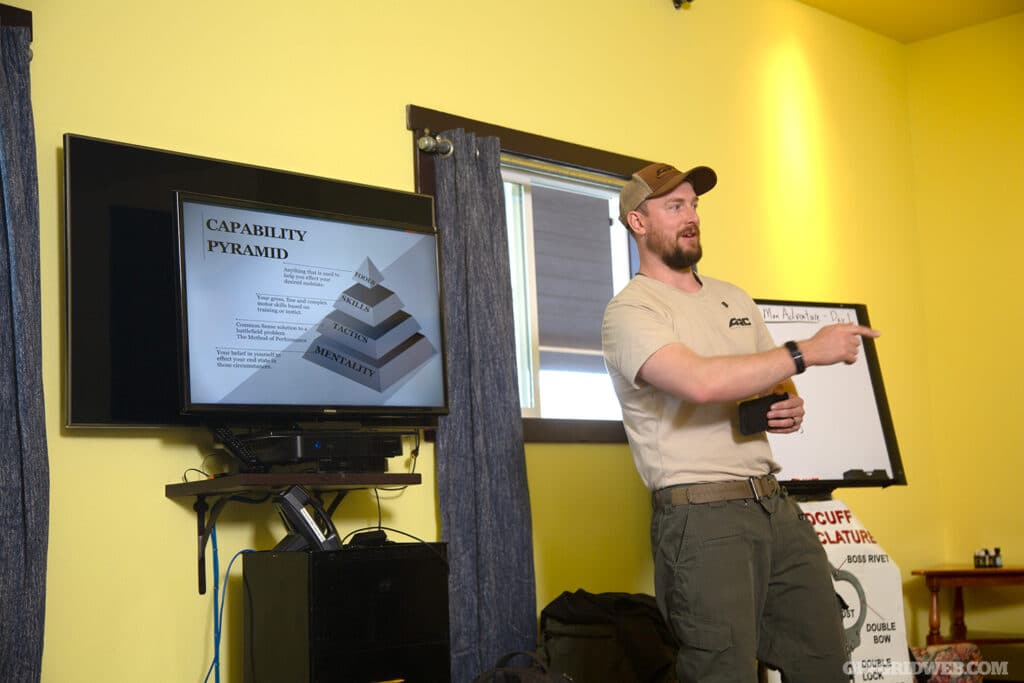
Instructor Michael Caughran discusses the layers of the “Capability Pyramid.”
The Silent Professional
The phrase came up within the first hour. Our instructor, Michael Caughran, spoke in an even tone that fit the room. He was not interested in social media theater or tactical fashion. He addressed teachers, parents, young professionals, and the occasional veteran with the same message. Capability is a choice. You do not need a certain background to become the person who stays calm when the rest of the room is losing its footing. However, you do need discipline and a plan.
Michael introduced a simple idea that shaped everything that followed. He called it the capability pyramid. Mindset forms the base. Tactics sit above mindset. Skills go on top of tactics. Tools rest at the peak. The order matters. People love to start with gear. It is easier to buy a flashlight than it is to build a decision-making habit. Tools do not save you from poor choices. Even a legend from the frontier can walk into the wrong seat at the wrong time and fail to face the door. The pyramid rewards clear thinking before clever hardware.
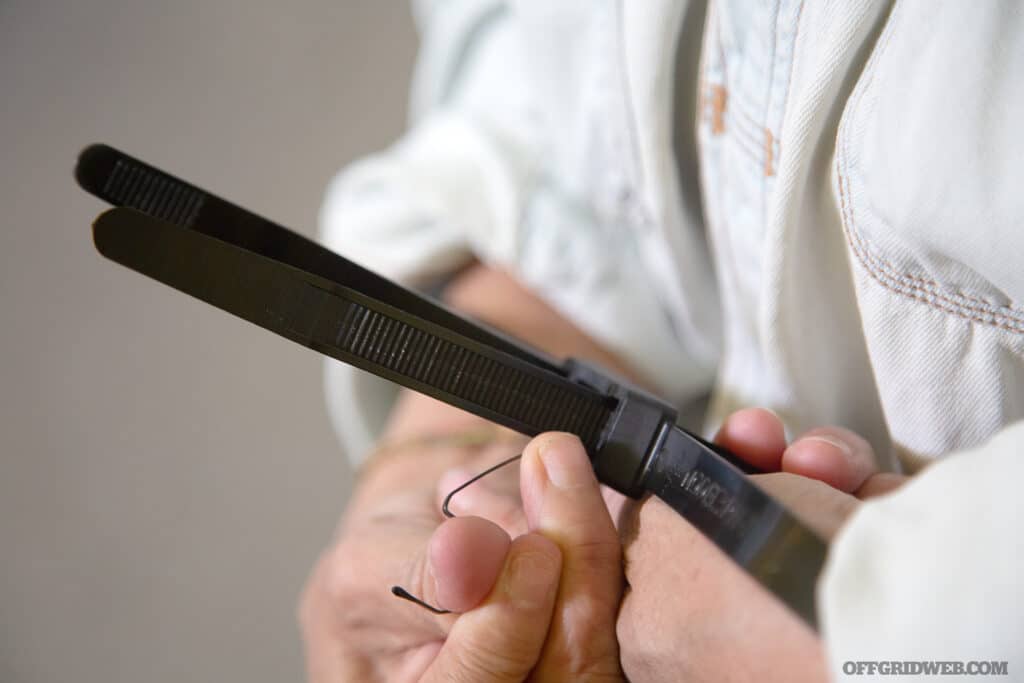
Zip cuffs, a commonly used restraint, can be defeated with a cleverly manipulated bobby pin.
The Escapist Mindset
The first day of Grey Man Academy focused on mental control and threat recognition. The topic sounds dark at first. But it is all about understanding how people get trapped, and how they get out. We talked about situational awareness in plain language. Look for what does not belong. Notice who is watching who. Identify exits. Keep a simple baseline of the space you are in. These are life skills, not paranoia drills.
Michael walked us through case studies that turned abstract ideas into vivid markers. Two anti-apartheid activists in South Africa spent a year shaping a path to freedom and kept their heads clear enough to lock a cell behind them as they left. An American contractor used his captors’ assumptions to buy a sliver of time and eventually escape. A former student’s family faced a planned home invasion. Preparation, instincts, and decisive action made the difference. These are rare events. Rare is not the same as impossible. The lesson was not to seek danger. The lesson was to honor early warnings and act sooner rather than later.
We studied a simple model that breaks a kidnapping into phases. Capture is shock. Movement creates windows. Temporary holds are messy. Interrogations mix manipulation with pressure. Permanent holding creates overconfidence in the people running the show. None of this was presented as a script to follow. It was a way to organize stress. When your brain labels a phase, you can ask better questions. Where is the noise? Where are the doors? Where is the attention? Those questions turn panic into a plan.
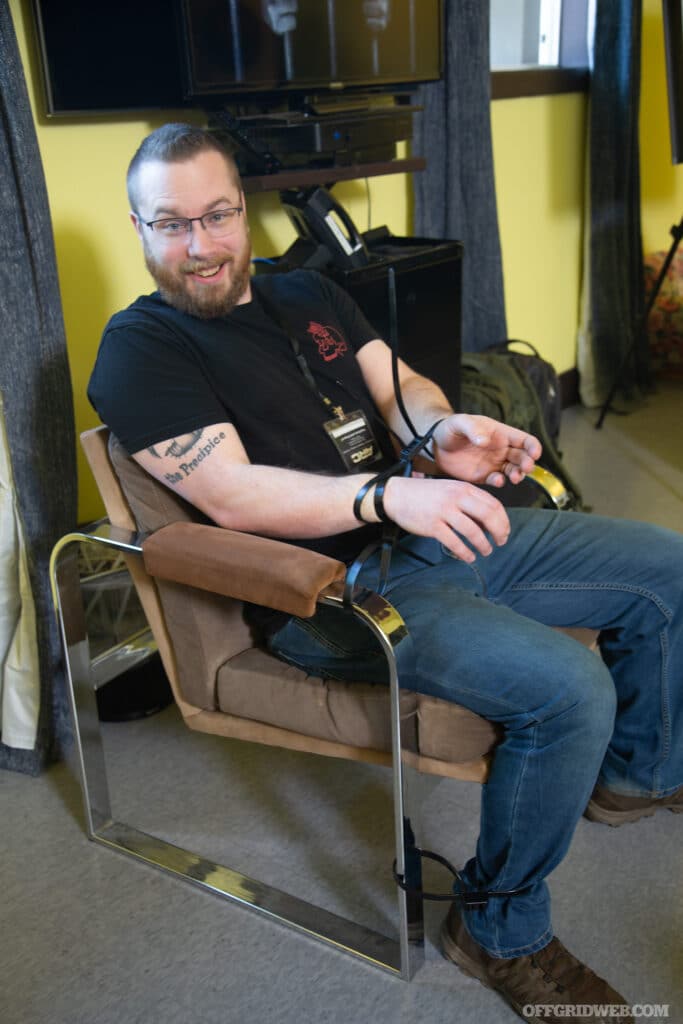
Students were placed in what initially seemed like impossible situations, only to discover they could overcome the scenario with a calm and curious mind.
Mindset Meets Mechanics
Escape work begins between your ears. You need belief before you need a tool. You are not a statue. You are an investigator. You are always looking for slack, for edges, for changes in rhythm. Night favors the patient. Noise hides small movements. Distraction is a resource. Understanding how a restraint is supposed to function makes you better at finding its weak points. You can carry a lawful tool. You can improvise when you must. You can also make something simple out of what is available. None of this requires superpowers. It does require grit and curiosity.
The class moved from theory to carefully controlled practice. Each student chose a restraint to work against under supervision — tape, rope, plastic cuffs, steel cuffs with training keys. We practiced in a way that emphasized safety. We used communication. We checked circulation. We took turns as spotters. Under the pressure of a stopwatch, the test was to manage adrenaline as much as it was successfully escaping.
When it was my turn I chose plastic, law enforcement-style zip-ties. I tried one approach that failed. I shifted to another that demanded focus, coordination, and more patience than I thought I had in me. The timer stopped after 5 minutes and 11 seconds. The room felt 10 degrees cooler once the cuffs broke free. My forearms stung. My head felt oddly clear. I understood what the instructors meant by confidence built under pressure. You cannot buy that in a catalog.
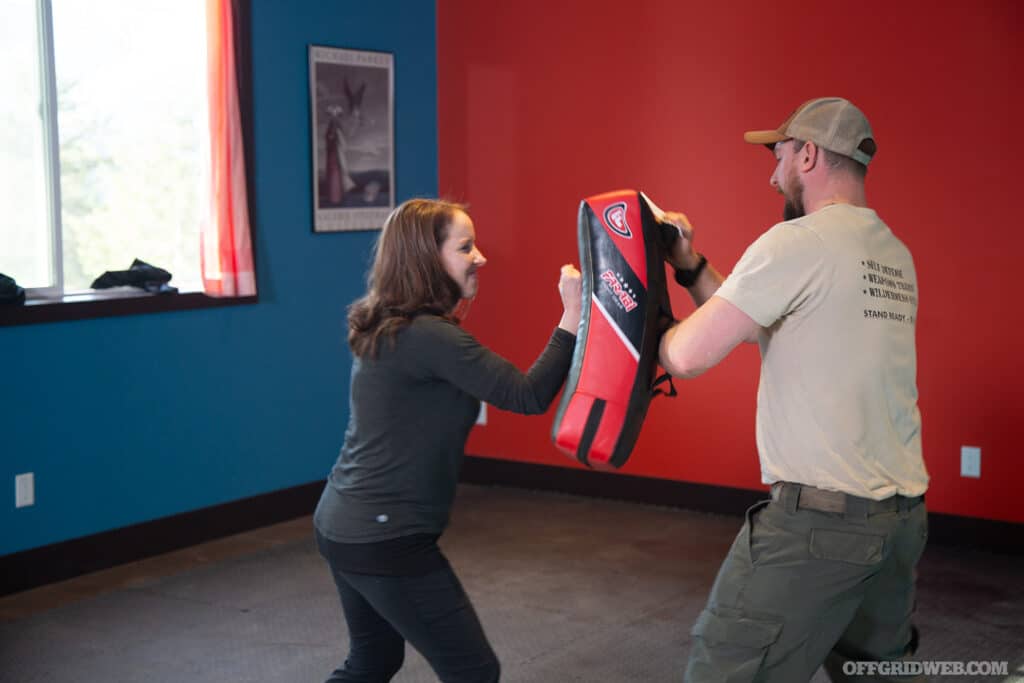
Methods focused on strikes that came naturally so that reactions under stress became quick and efficient.
Combatives with Purpose
The second block moved from restraints to the human body. The premise was direct. Violence is rare in daily life. If it finds you, you will not schedule it. You might be in a kitchen. You might be stepping out of a car. You might be wearing clothing that restricts motion. You may have to act with one hand or from a compromised position. In those moments the goal is simple. End the threat as fast as you can and escape to safety. The techniques were rooted in structure rather than sport. We learned to think in terms of posture, base, and alignment. Strength was a bonus, not a requirement.
We drilled strikes that do not depend on perfect conditions. Palms, hammer fists, elbows, knees, simple kicks delivered with balance. We used open hands more than closed fists to protect our own bones. We practiced moving after contact, so we did not freeze in place. We drilled from different positions and while partially restrained to stress creativity and body awareness. You can hit hard and move smart at the same time. The metric was not speed or flash. The metric was repeatable damage that buys space and time.

Grey Man Academy’s Combatives training went beyond practicing moves by pitting students against potential real-world scenarios.
An important thread ran through every rep. We were learning how to protect ourselves and others inside the law and inside our values. There were no calls to escalate a minor incident. There was constant focus on de-escalation where possible and on accountability when force is necessary. The class asked hard questions about proportionality and about bystanders. We did not dodge those conversations, and they made the training more honest.
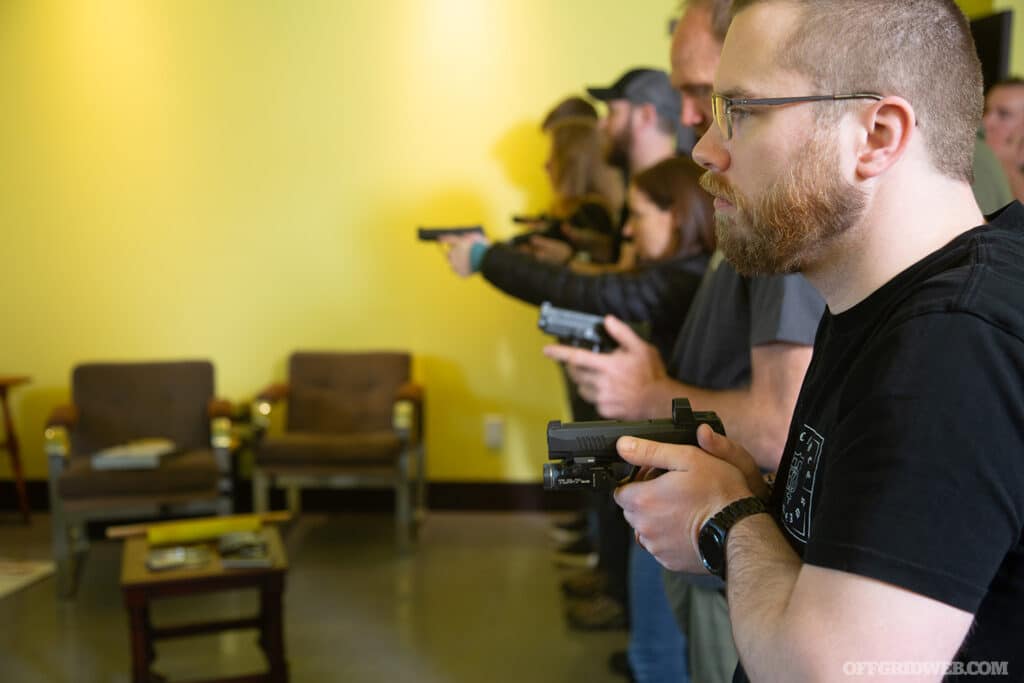
Fundamentals of drawing and presenting a concealed carry firearm were practiced before sending rounds down range.
Handgun Skills for Reality
The third day shifted to handguns. New shooters stood next to experienced ones. The range brief covered safety in plain terms. Muzzle discipline. Trigger discipline. A culture of calling a stop if anything looked odd. We began dry, working on grip, sight picture, and trigger press. Fundamentals sound boring until you watch them save time. Under pressure you do half of what you can do on your best day. That was the mantra for this block. We raised the bar in practice so our half would still be enough when it counted.
We built from slow draw strokes to faster ones.
We drew from concealment. We tested how clothing affects access. We shot sighted and unsighted at appropriate distances and learned when each method makes sense. We reloaded and cleared simple malfunctions. We adapted our stances to odd terrain. We learned about different carry positions and how they interact with driving, sitting, grappling, and daily tasks. We looked at everyday items and asked whether they enabled access or created a trap. Running a qualification drill turned our scattered reps into a single arc. It did not feel like a test for bragging rights. It felt like a map we could use to see where to spend our next month of practice.

After working on a few live-fire drills, Michael discusses what the shot patterns might be saying about our technique.
Life Between Sessions
A word about the setting. Grey Man Academy is not a spartan camp where you crash on a cot and eat mystery stew. The lodging sits on quiet ground with enough space between buildings to let your nervous system find neutral. Early registrants can land rooms with a patio and extra views. Everyone gets a private space with clean linens and simple comforts. The walk to the training areas takes the edge off the morning.
The food supports the pace. The kitchen crew leans into a farm-to-table approach that tastes like a place rather than a supplier catalog. Three full meals arrive like clockwork. Coffee appears when you need it. The menu shifts with the season and with the animals raised nearby. Dinner included a slow-cooked cut from the ranch that refilled everyone without sending us into a coma. It is surprising how much better you process new information when what you eat is simple and clean.
When the day ends, you are not stuck pacing a hotel hallway. A hot tub sits near a pond where the light lingers at the edges. There is a small gym for the people who like to prime their legs before breakfast. Trails cut through the property for slow walks that turn jittery energy into reflection. An on-site range lets motivated students revisit a drill with a coach watching. Benches near fire pits become quiet corners for writing down what you want to remember. Recovery is not a treat. It is part of the curriculum.
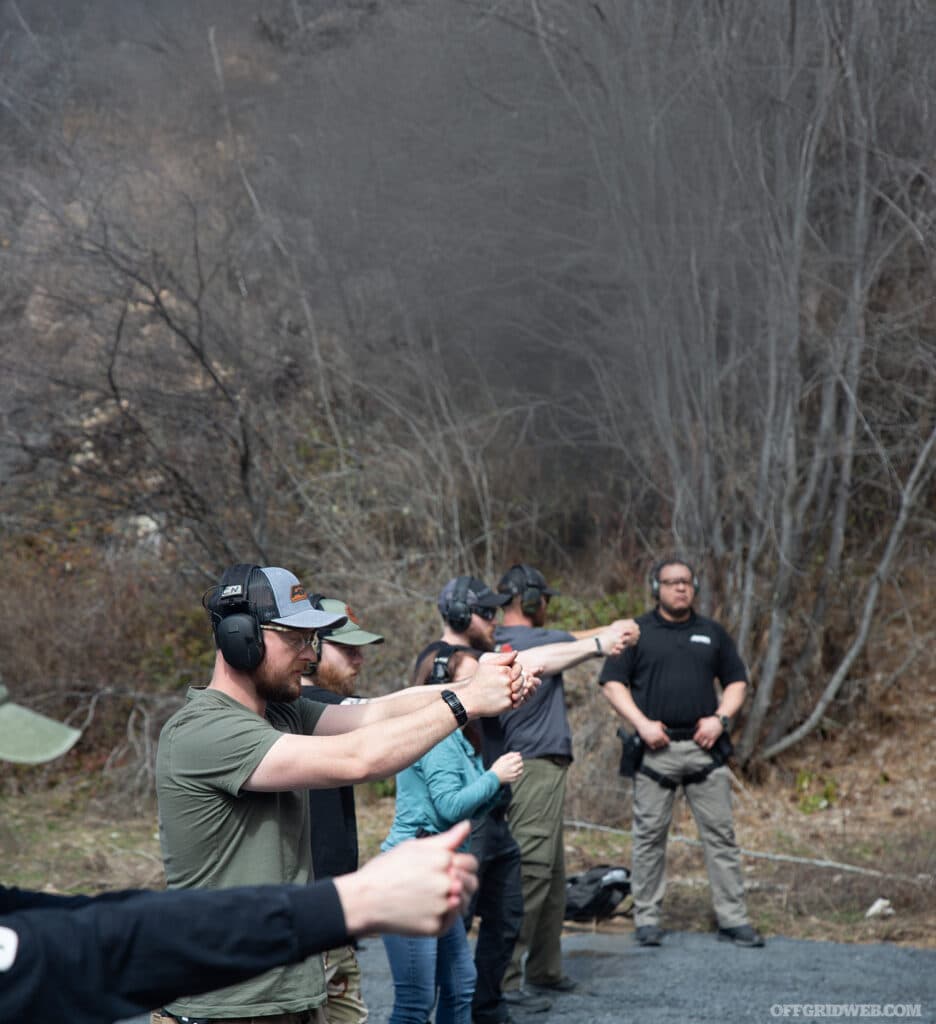
Out at the range, we went through the motions of presenting our firearms with our eyes closed to work on our consistency and develop that all-important muscle memory.
What Sticks When the Tape Comes Off
Grey Man Academy sells skills. The thing it really delivers is composure. That word kept surfacing as I unpacked the weekend in my head. Composure is noticing the shape of a room before a problem starts. It is remembering that movement creates options. It is choosing a tactic that fits your values and your laws. It is acting without advertising your intent. The training turns those ideas into a set of habits you can feel in your bones.
A skeptic might ask whether any of this is necessary for an average person. My answer is straightforward: The vast majority of days will be normal, but that is exactly why you train. Skills you never use in a dramatic way still change how you carry yourself. You lock your doors with intention. You read a crowd with a softer gaze. You pick a table with better sight lines without making a show of it. You handle a flat tire at night without spinning into anxiety. You speak calmly to the person next to you when a loud noise rattles the room. You keep your head while others are searching for theirs.
For students who already have experience, the Grey Man Academy offers a chance to refine rather than accumulate. Michael’s pyramid forces you to ask whether you are building on the right layer. It is humbling to realize that a new holster will not fix a mindset issue. It is empowering to watch your draw times fall after you correct a single habit at the base of your stance. Tools become meaningful after tactics and skills are anchored.
The class returns to that point again and again until it becomes muscle memory.
The ethical tone matters as much as the technique. The staff frames every drill with real-world context. We talked about communication with law enforcement after a defensive incident. We talked about the presence of family members and strangers. We talked about how to ask for help clearly and how to keep others from rushing into danger. There is a strong thread of responsibility running through the course. You leave with more power. You also leave with a better sense of when not to use it.
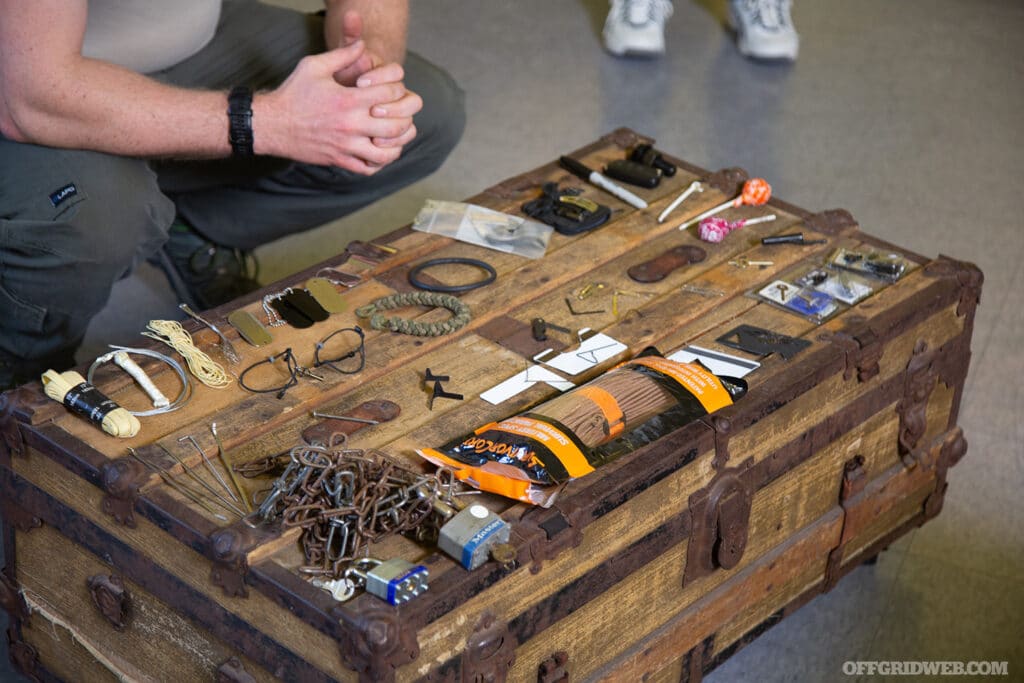
Although the Grey Man Academy class made use of a variety of tools to escape restraints, the items in this photo are by no means exhaustive. The only limit to what constitutes an appropriate tool is what your mind can come up with
Final Thoughts on ARC’s Grey Man Academy
I keep thinking about the first seconds of that chair drill. I remember the taste of adhesive and the thud of my heart and the weird urge to thrash. Then, the breathing starts. The plan forms. The panic drains just enough to move. That transition is the essence of Grey Man Academy. It is not a fantasy factory. It is a place that teaches you how to meet stress with a steady mind, a smart tactic, and a skill you practiced when no one was watching. The weekend gave me stories to tell, but it also gave me quiet habits that do not need an audience.
The goal is not to be the hero in a camera frame. The goal is to be the person who gets home. Sometimes that means you escape a situation you never wanted. Sometimes that means you use your voice to settle a room. Sometimes that means your hands do what they must so you can reach a door and hold it open for someone else. The Academy does not promise that life will present you with a perfect scenario. It shows you how to move through the imperfect ones with humility and resolve.
I left with sore hands and a clear head. With respect for the quiet people who practice without a spotlight. With a pyramid I can carry in my pocket. Mindset first. Tactics next. Skills after that. Tools last. That order feels like a compass I can trust. When the world gets loud, it points me in the right direction.
Train with ARC
Beyond Grey Man Academy, ARC offers numerous classes in topics of self-defense, dedicated weapons training, and wilderness survival skills. Check out the ARC website for more information.
Read More From Issue 70
Don’t miss essential survival insights—sign up for Recoil Offgrid’s free newsletter today!
- Issue 70
- Challenge Facilitates Capability
- Between River and Sky: Recounting a Jungle Expedition
- Blades for any Challenge
- Garmont Tactical Boots
- Mission Ready Pack: Minimalist Survival Kit
- ATAC, OLIGHT & Sunshine
- GEAR UP: Mission Ready
Check out our other publications on the web: Recoil | Gun Digest | Blade | RecoilTV | RECOILtv (YouTube)
Editor’s Note: This article has been modified from its original version for the web.


